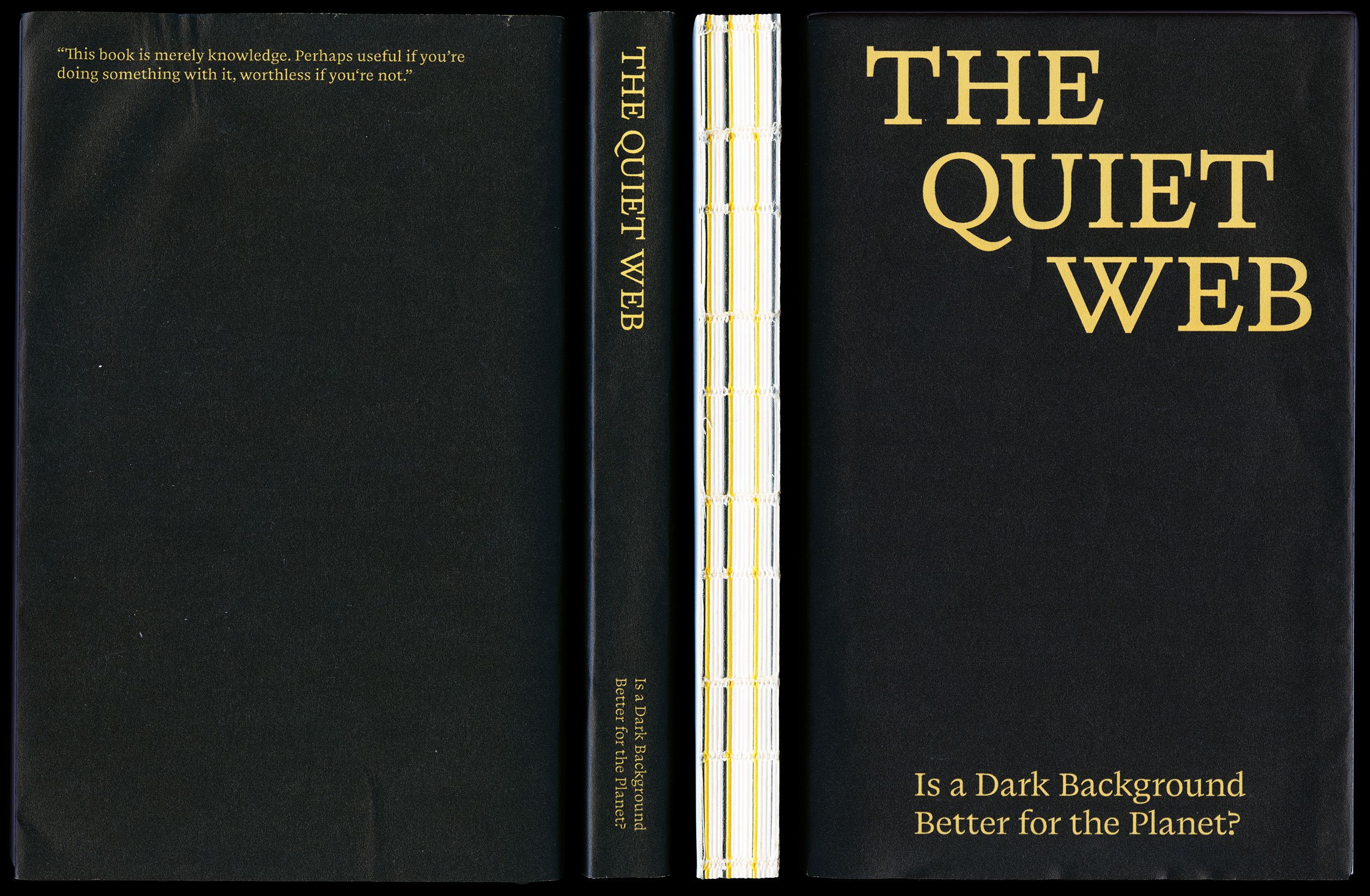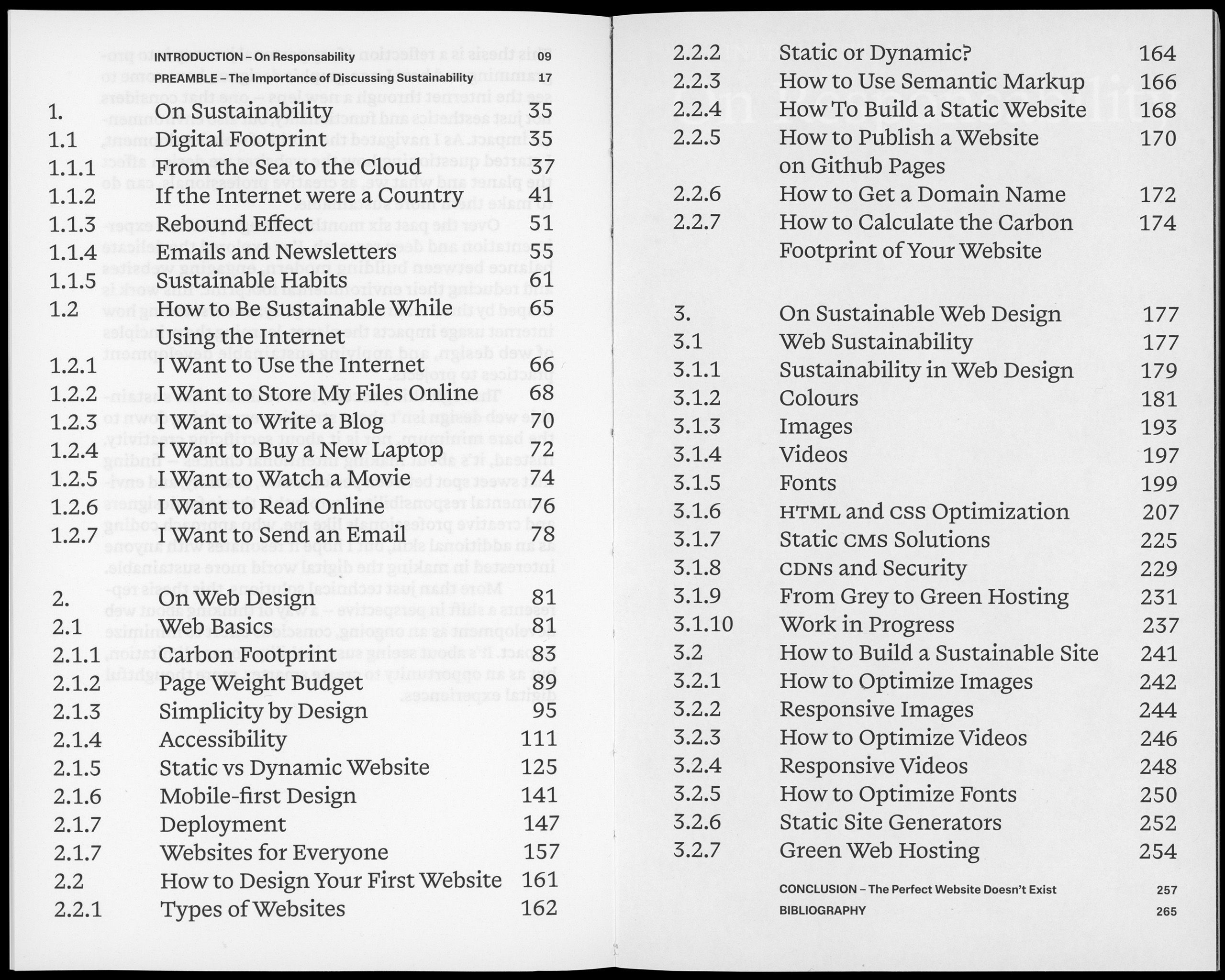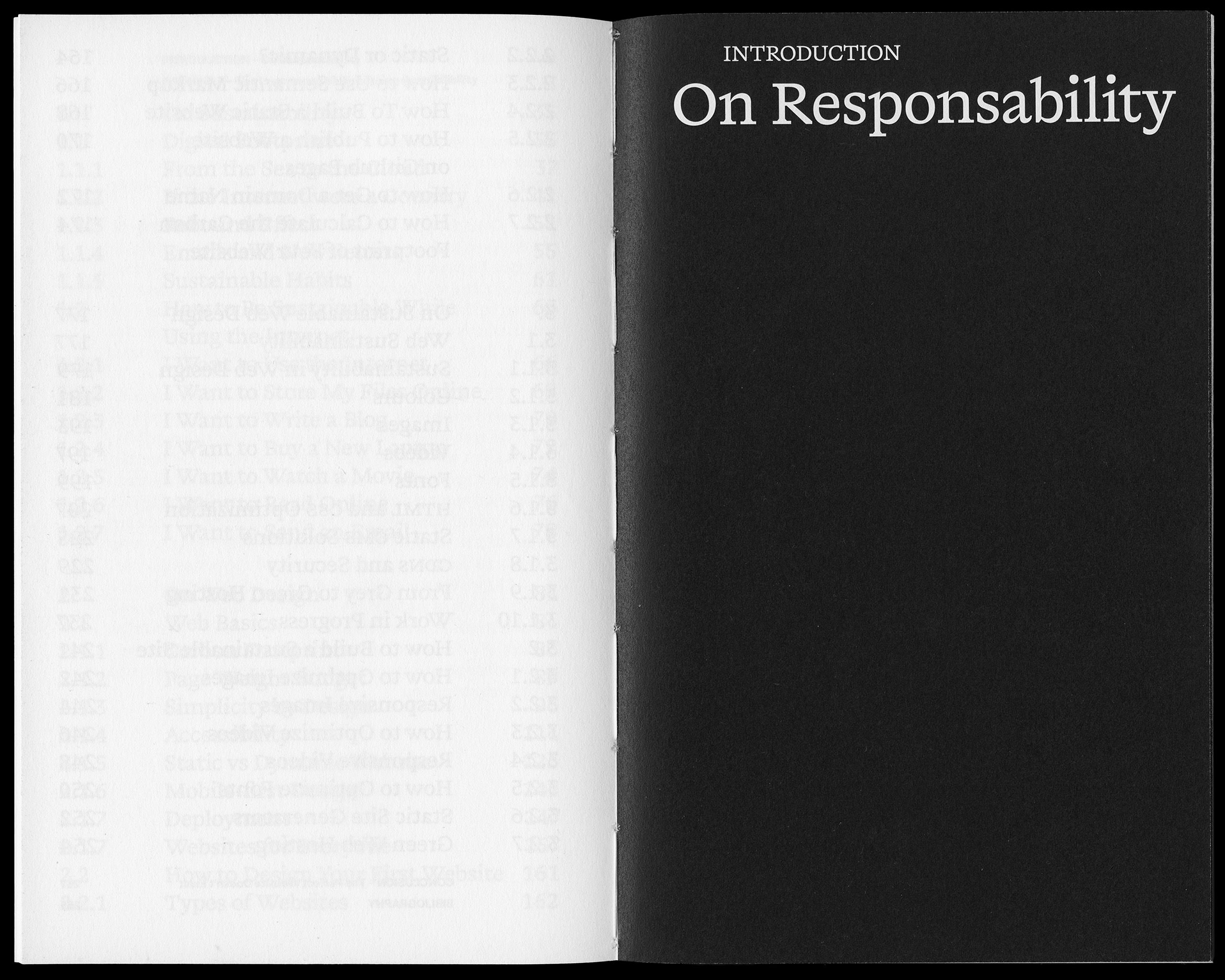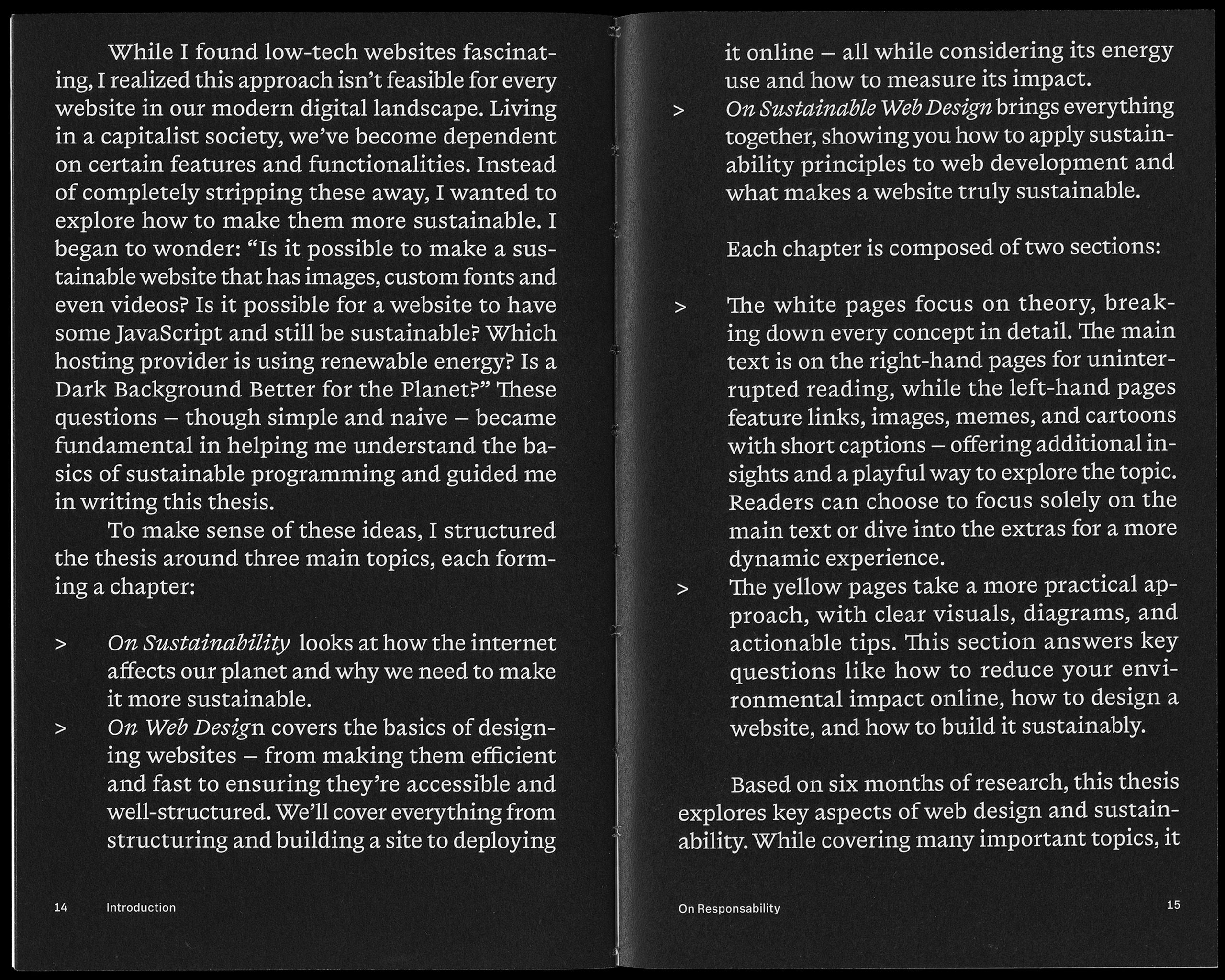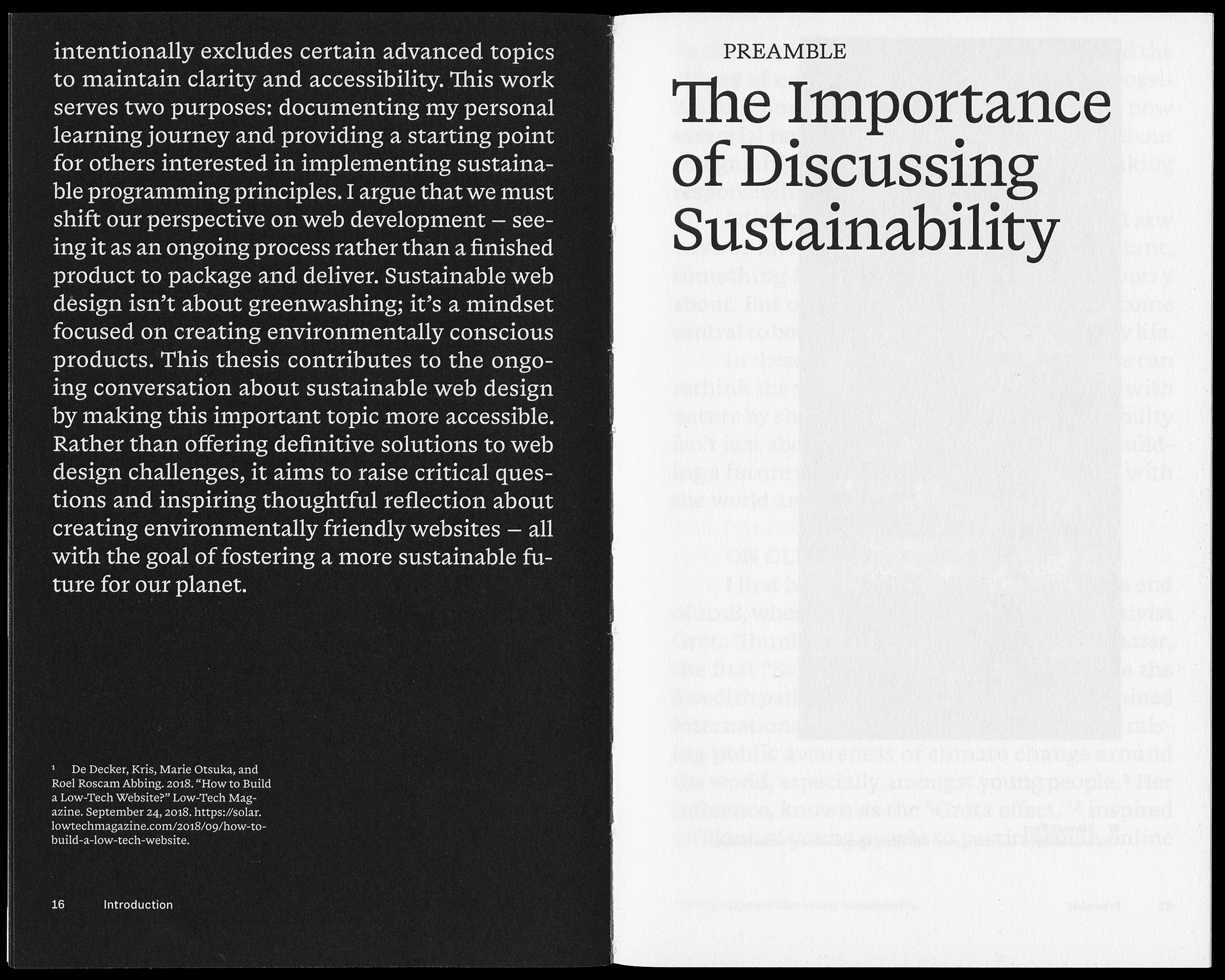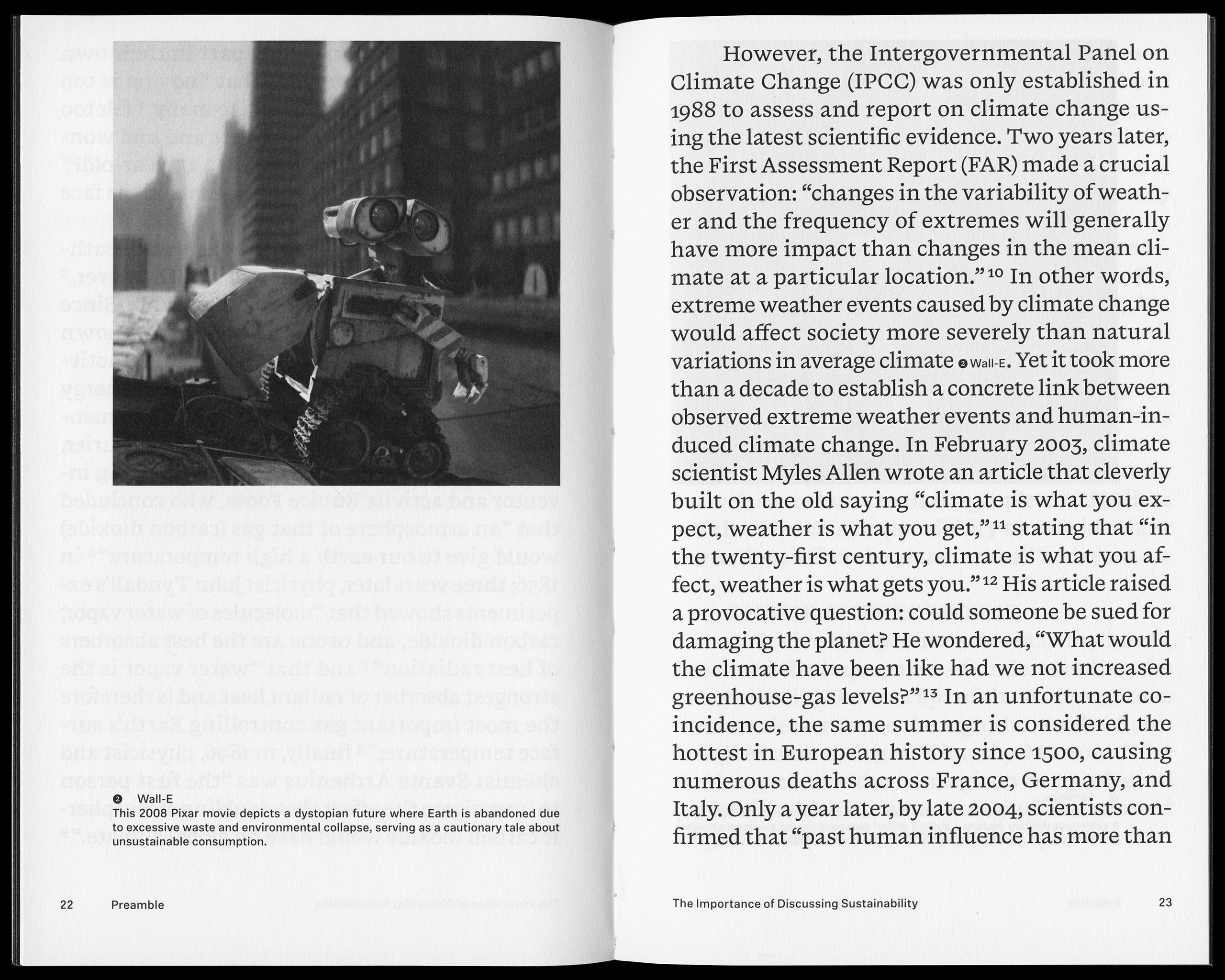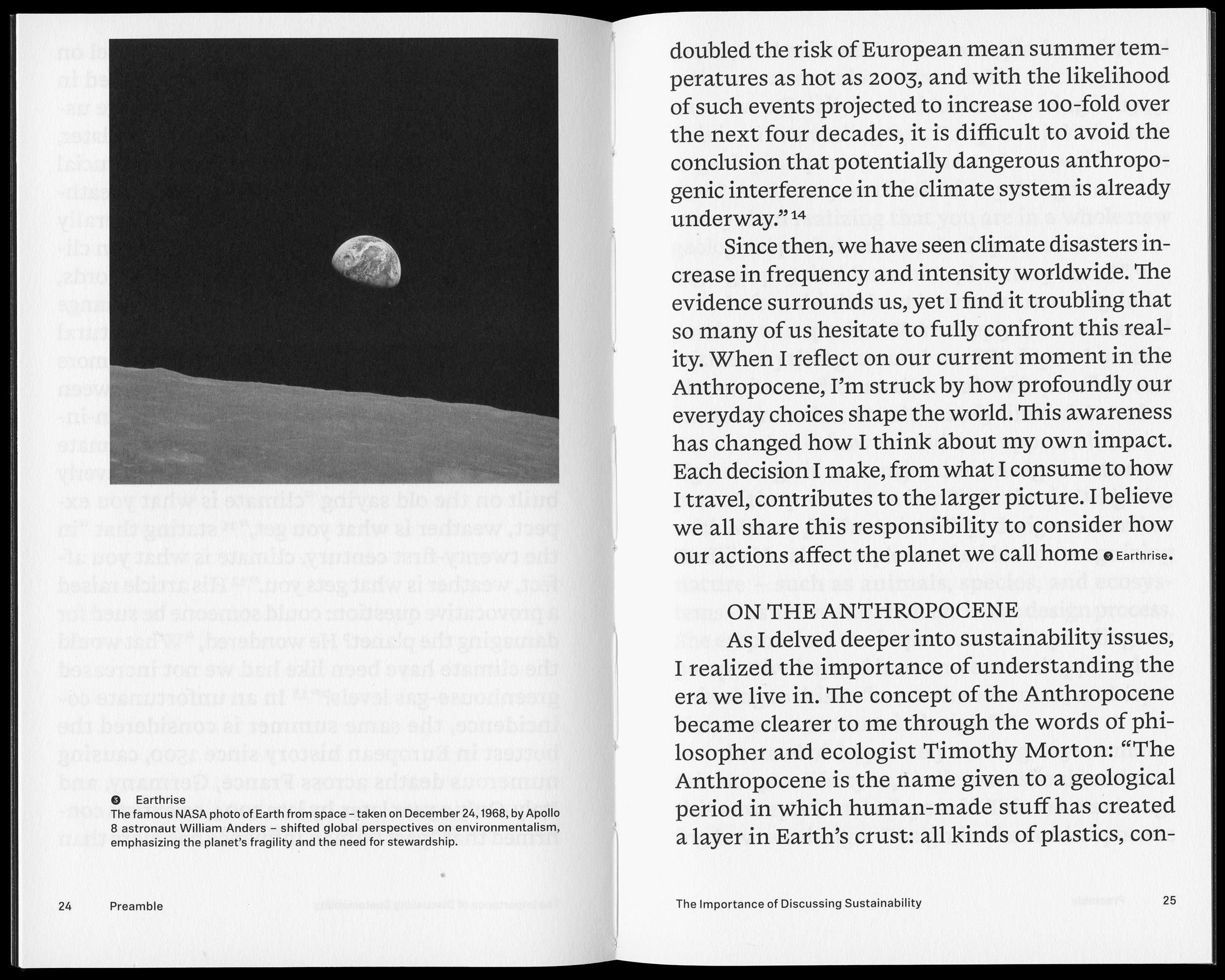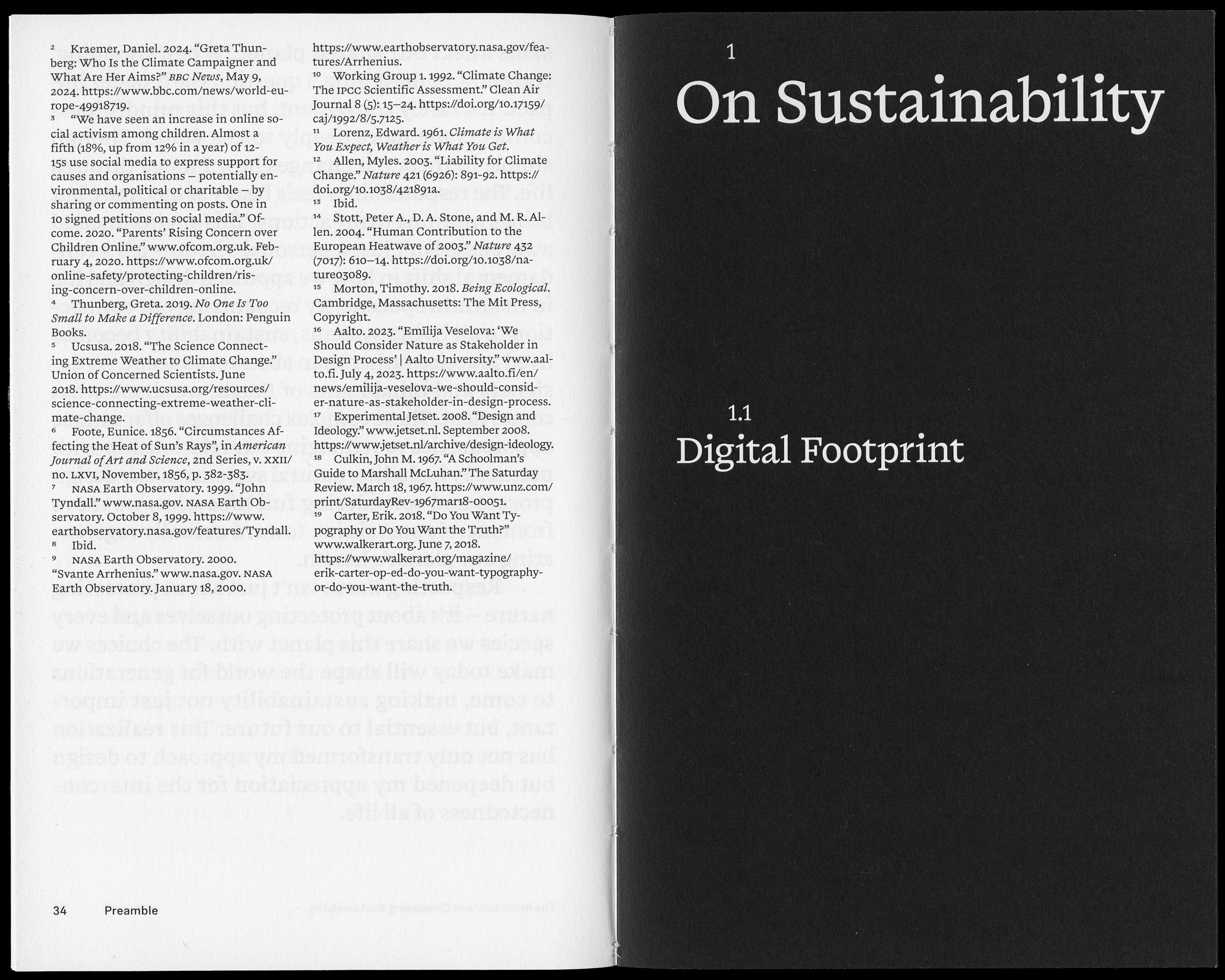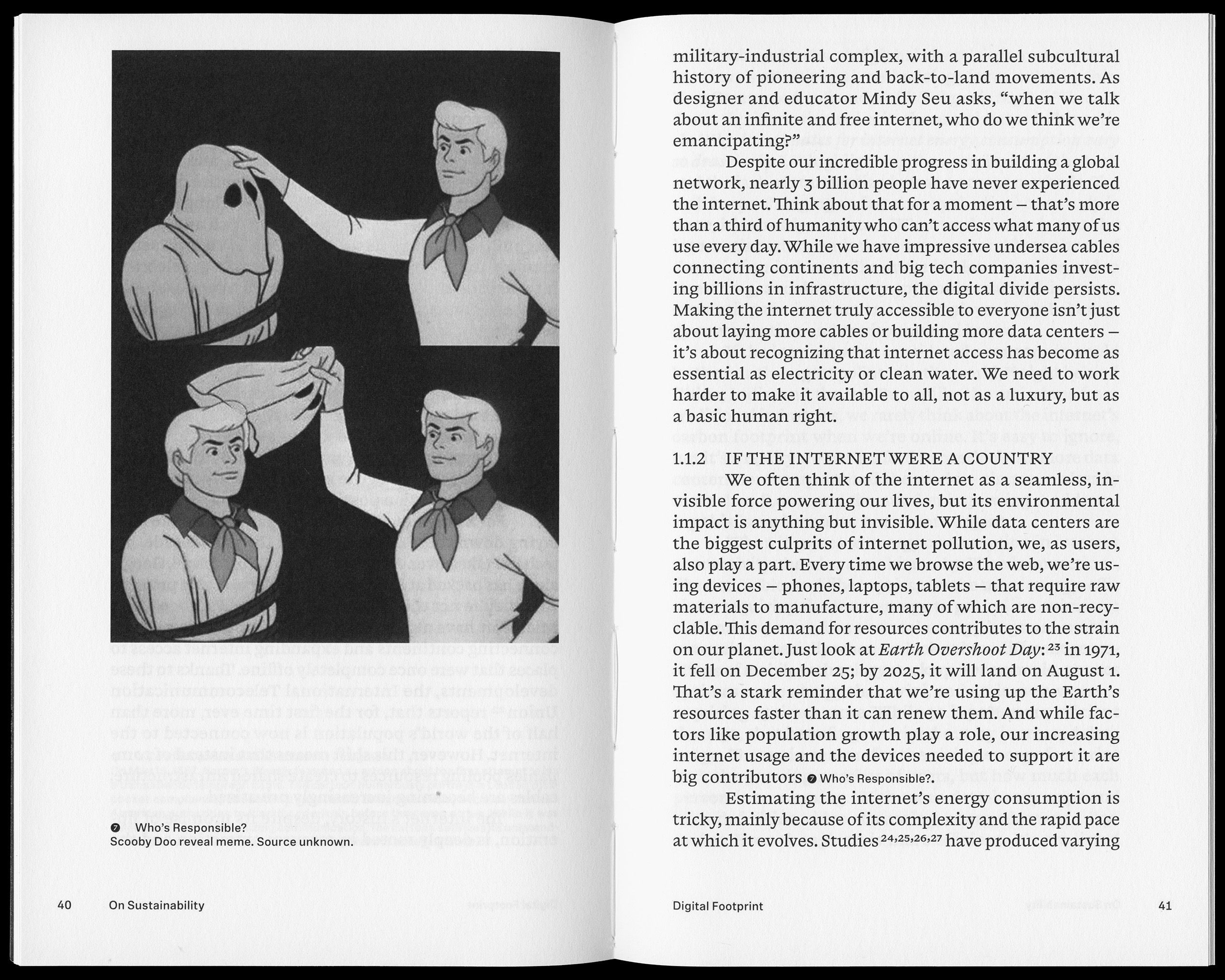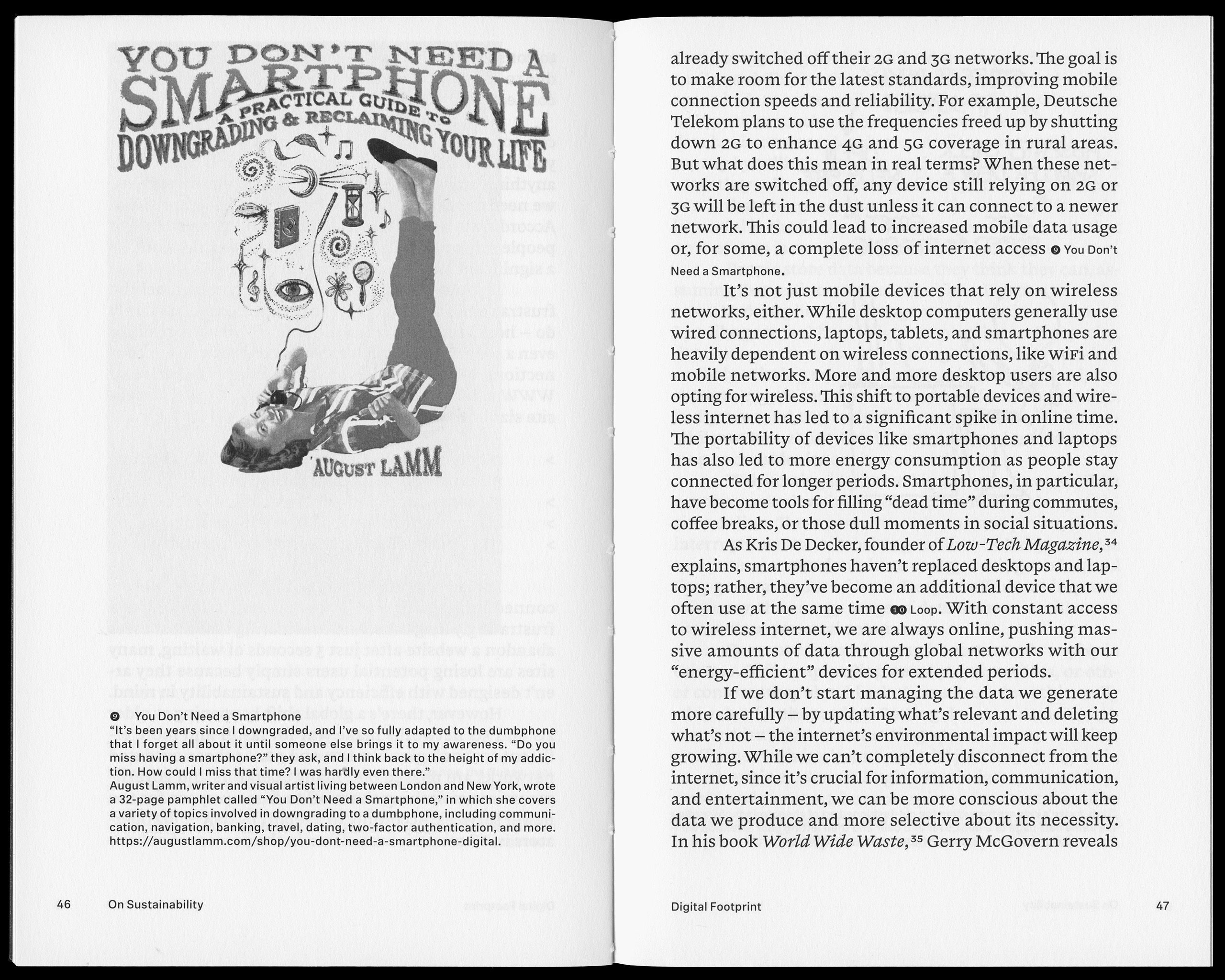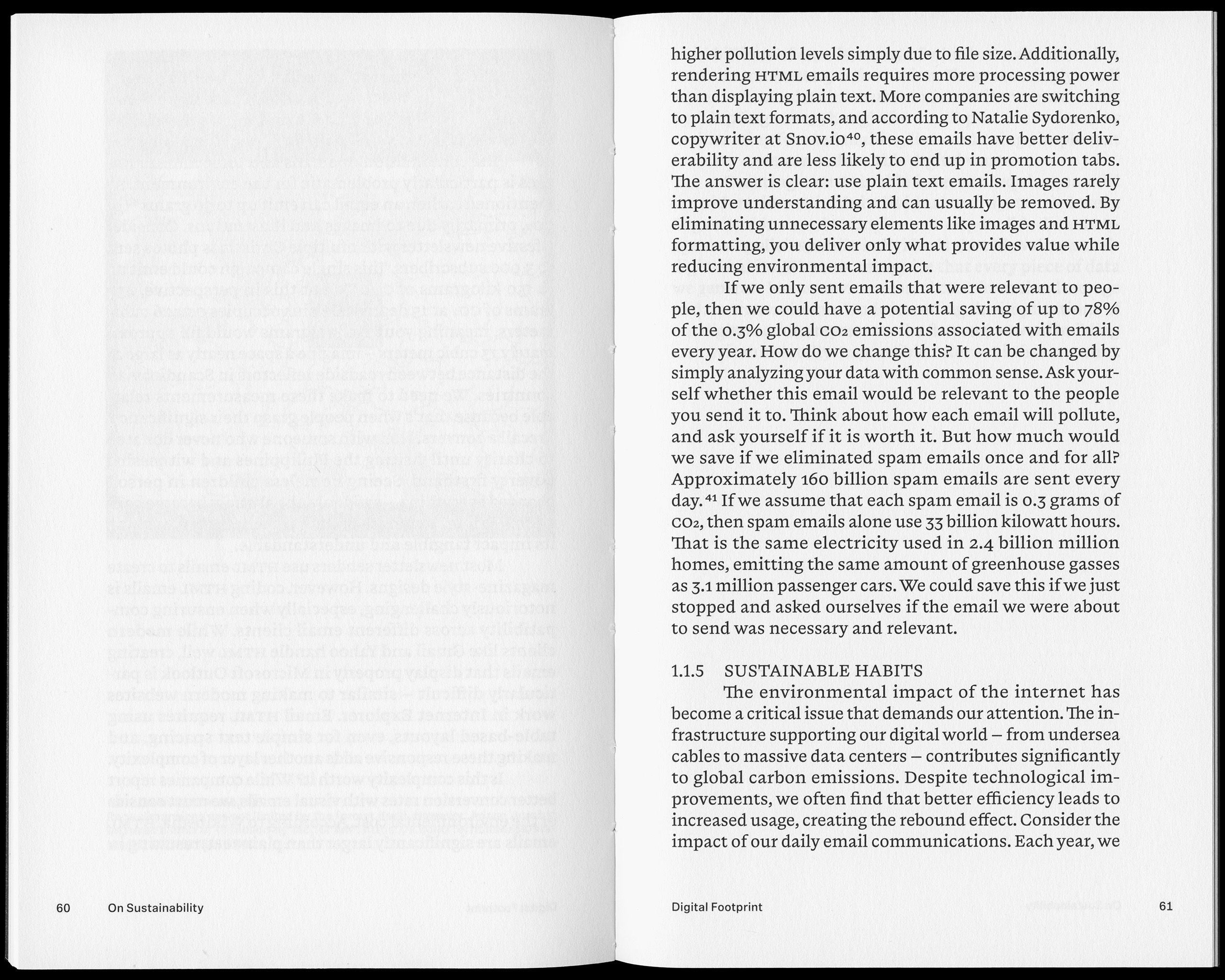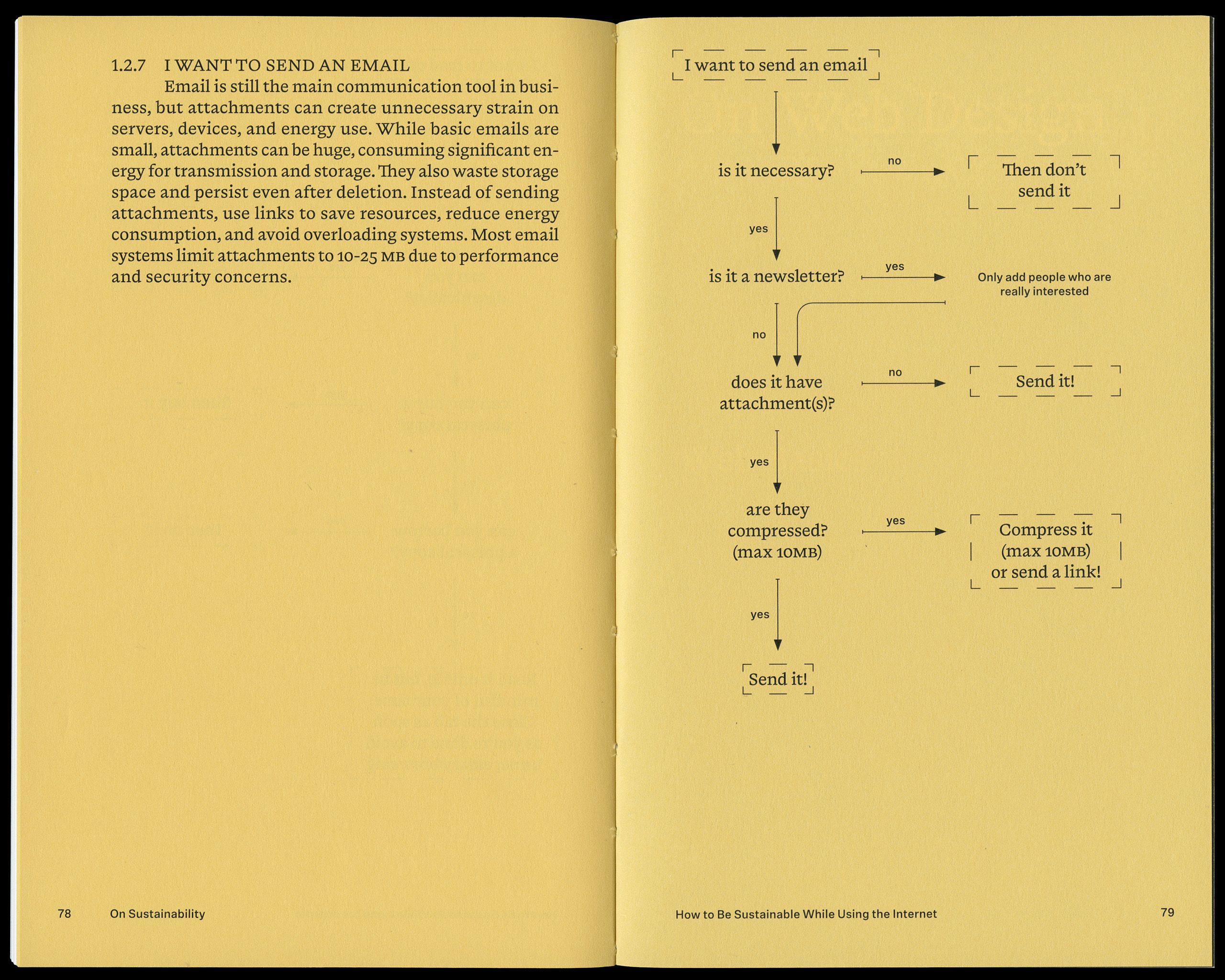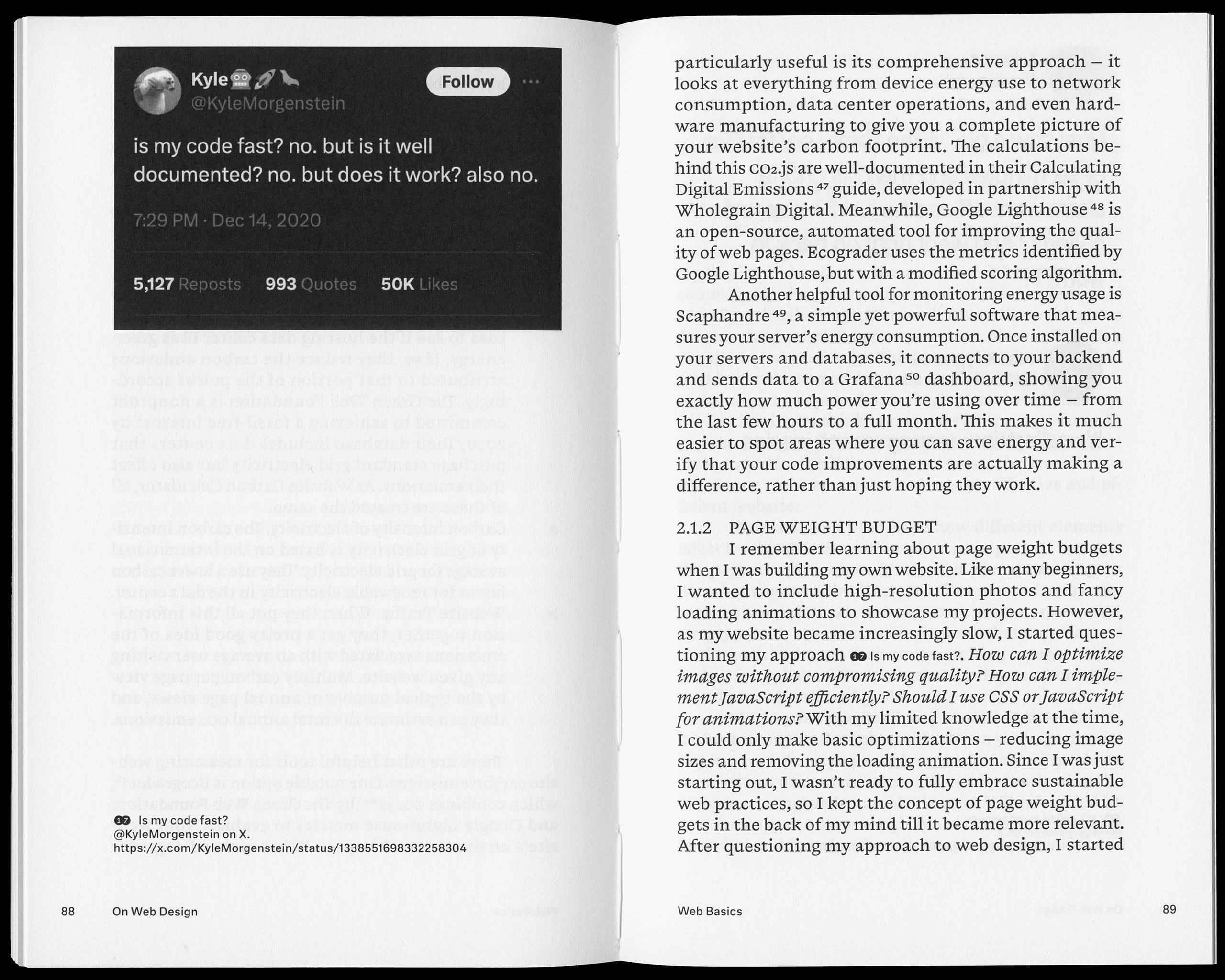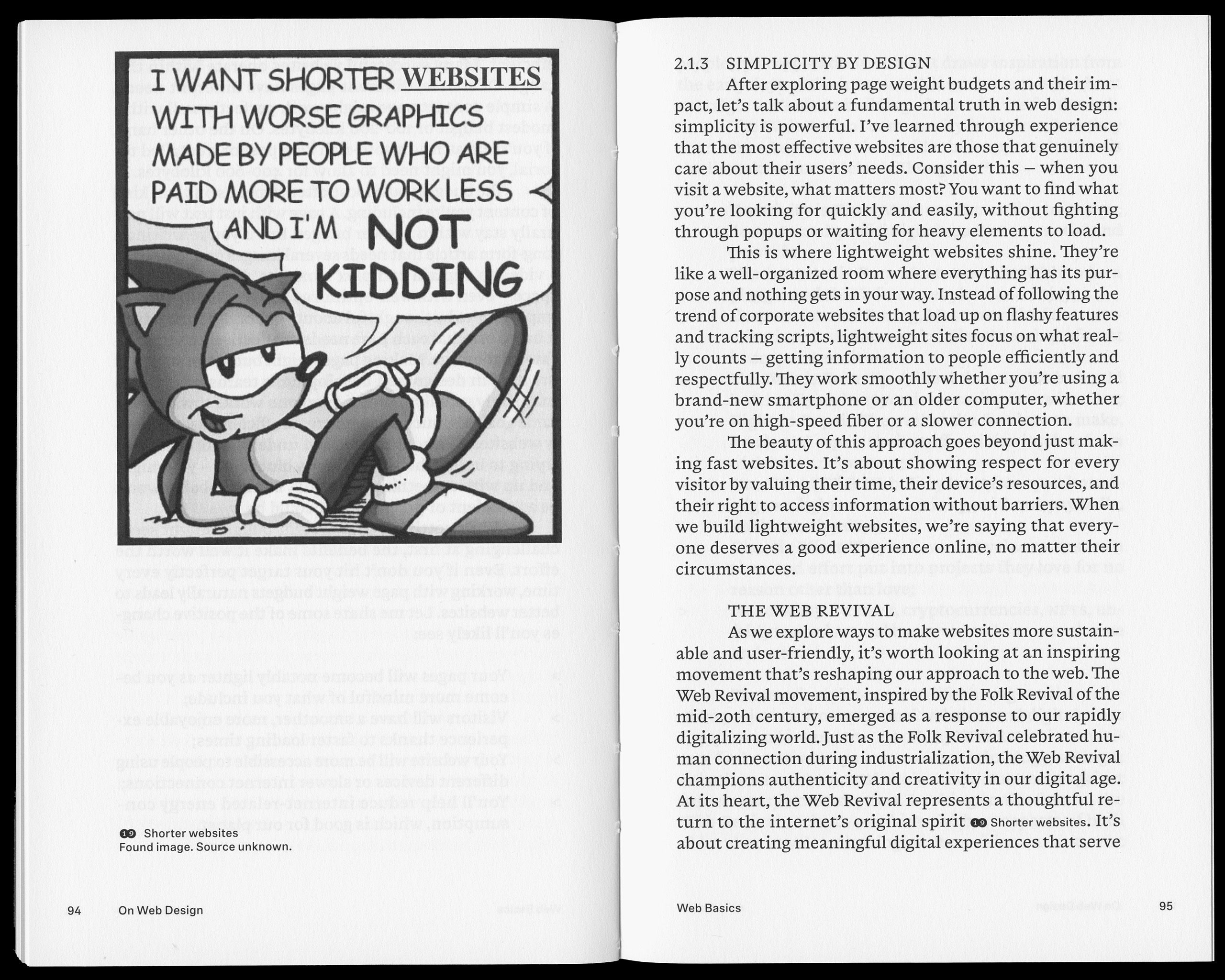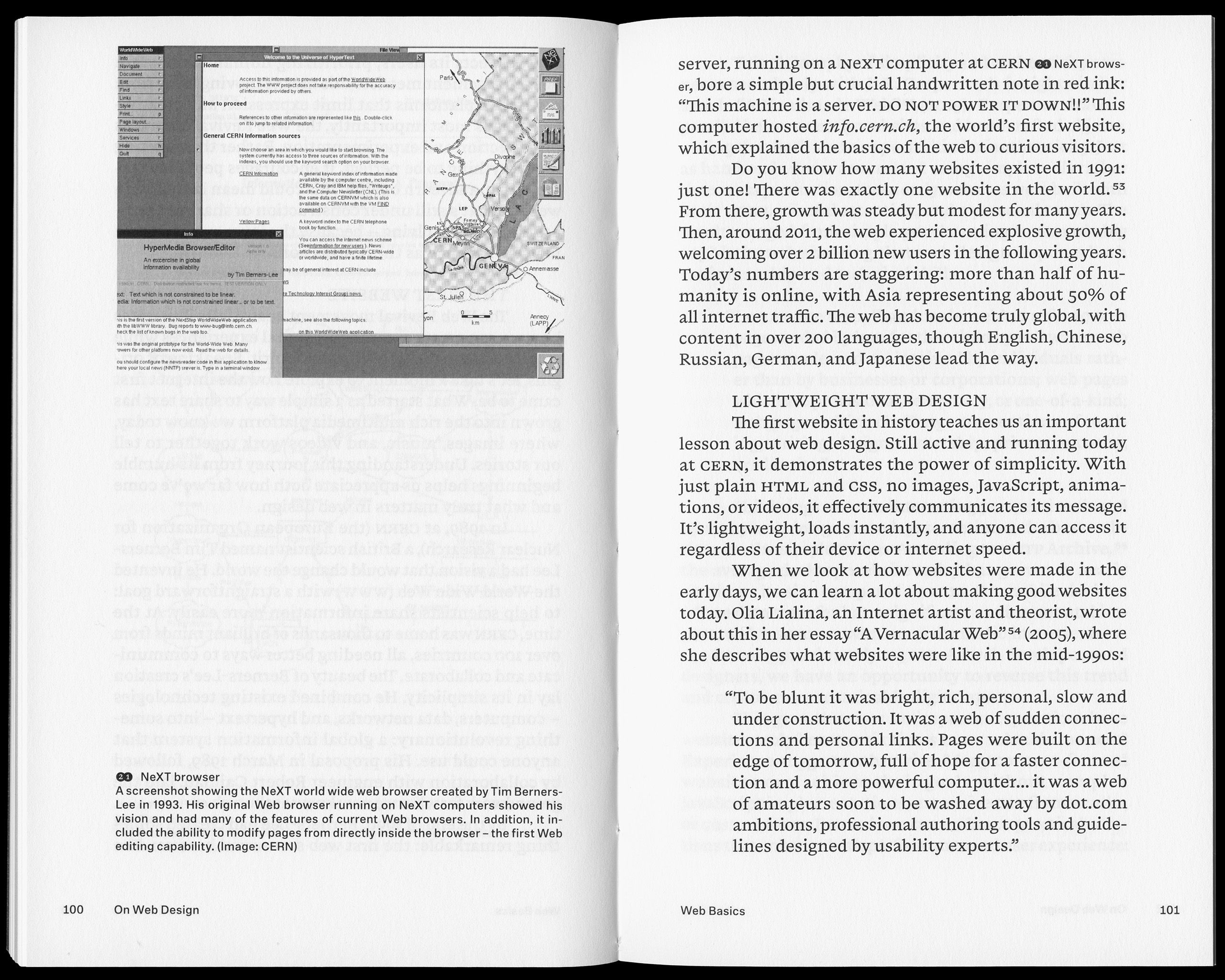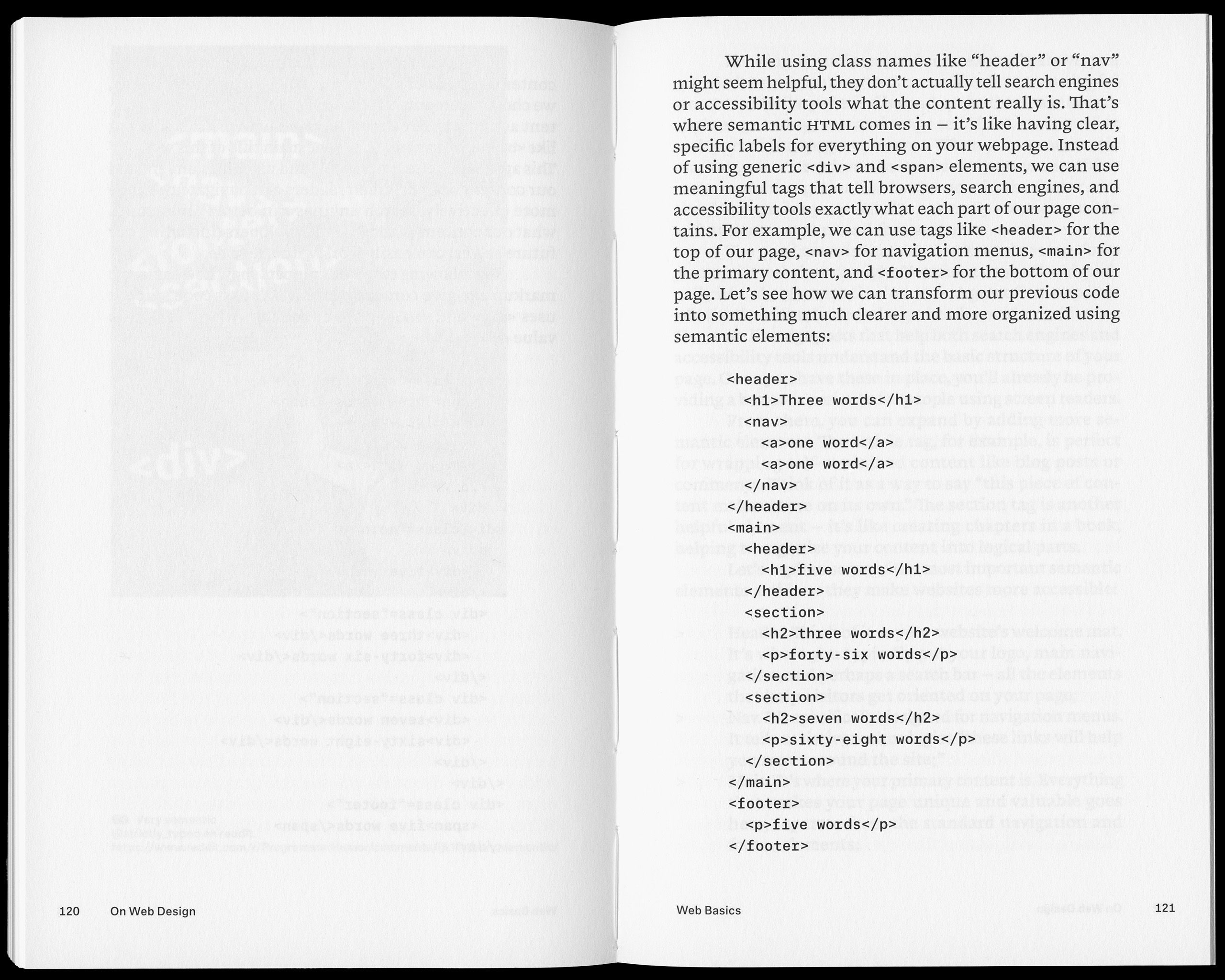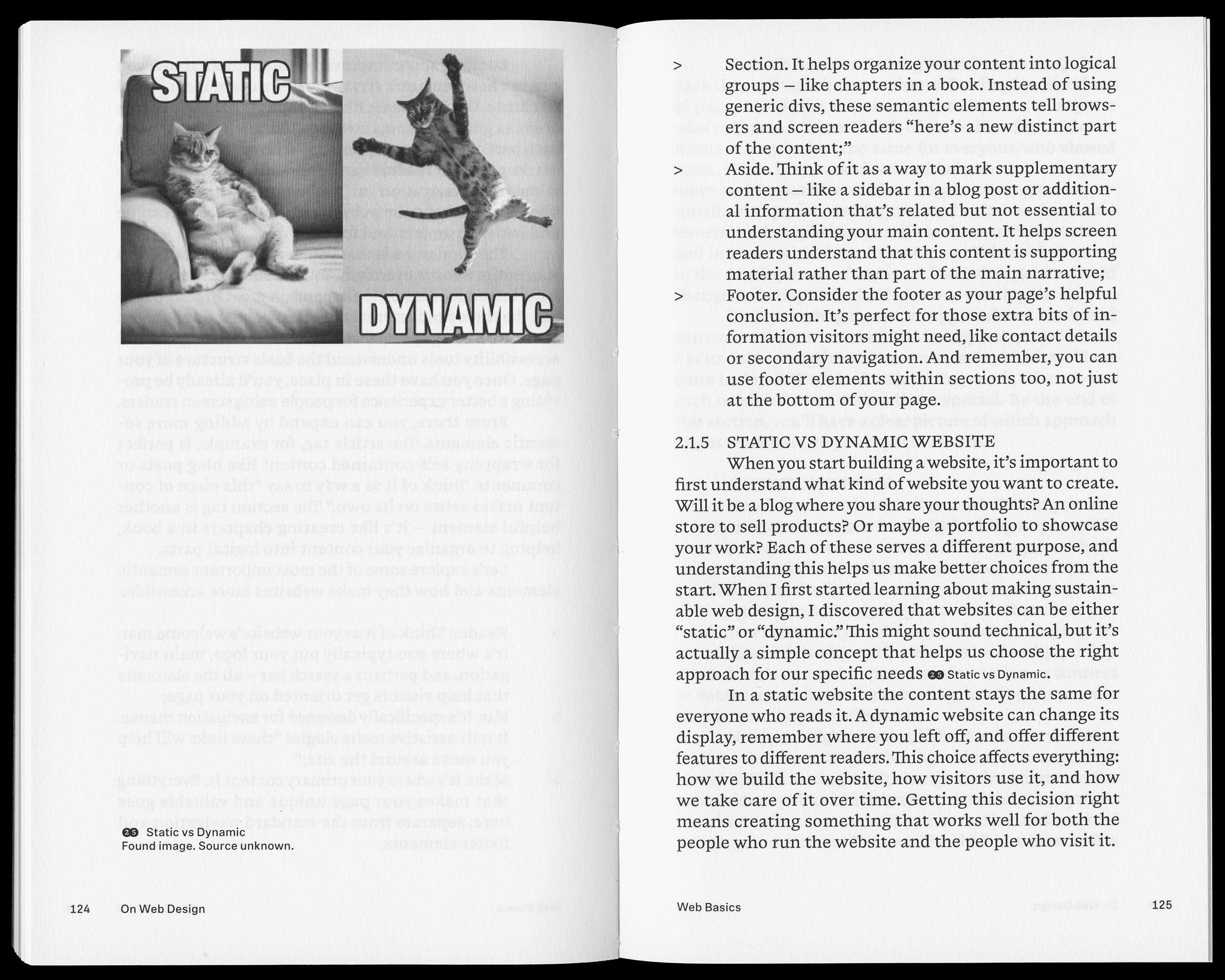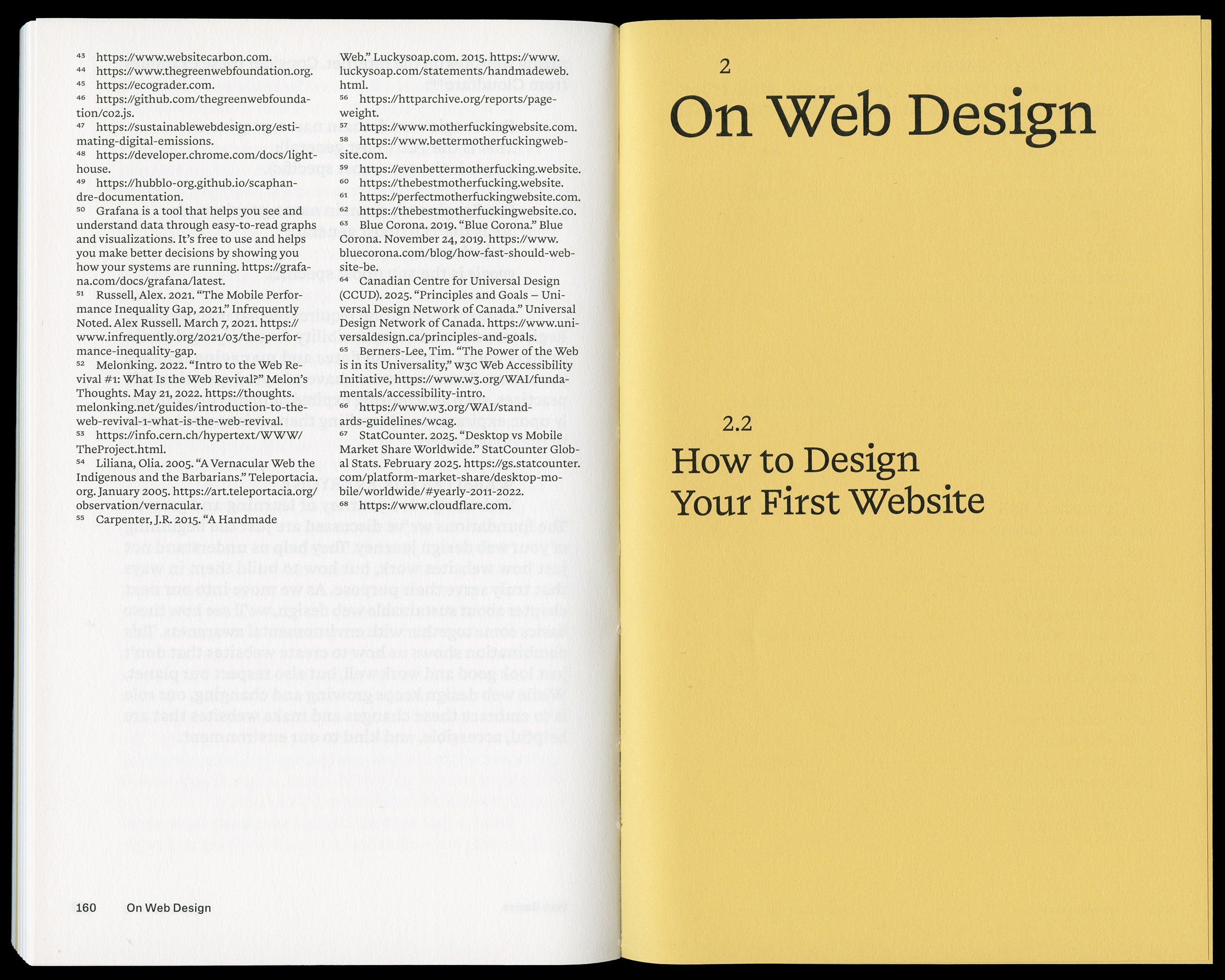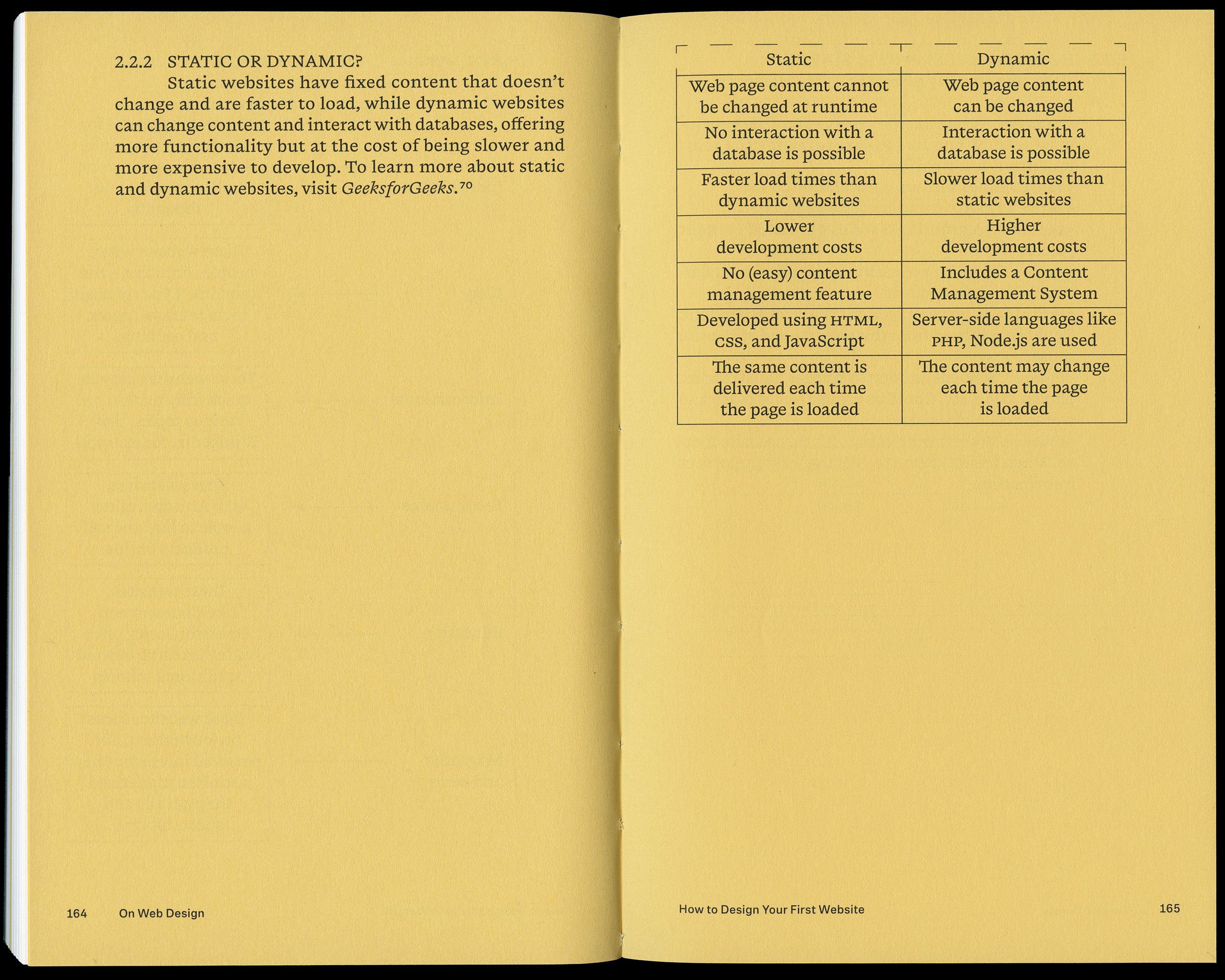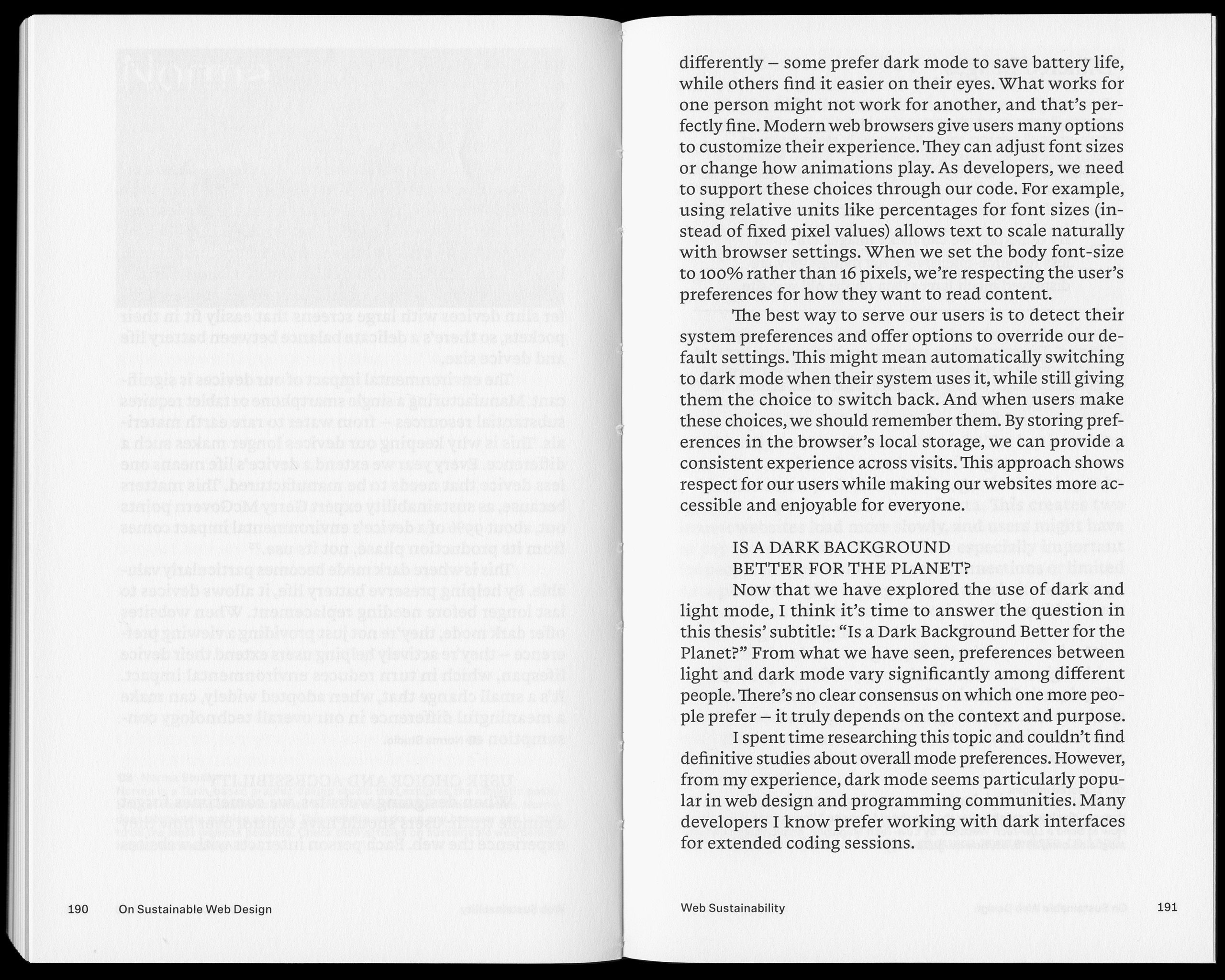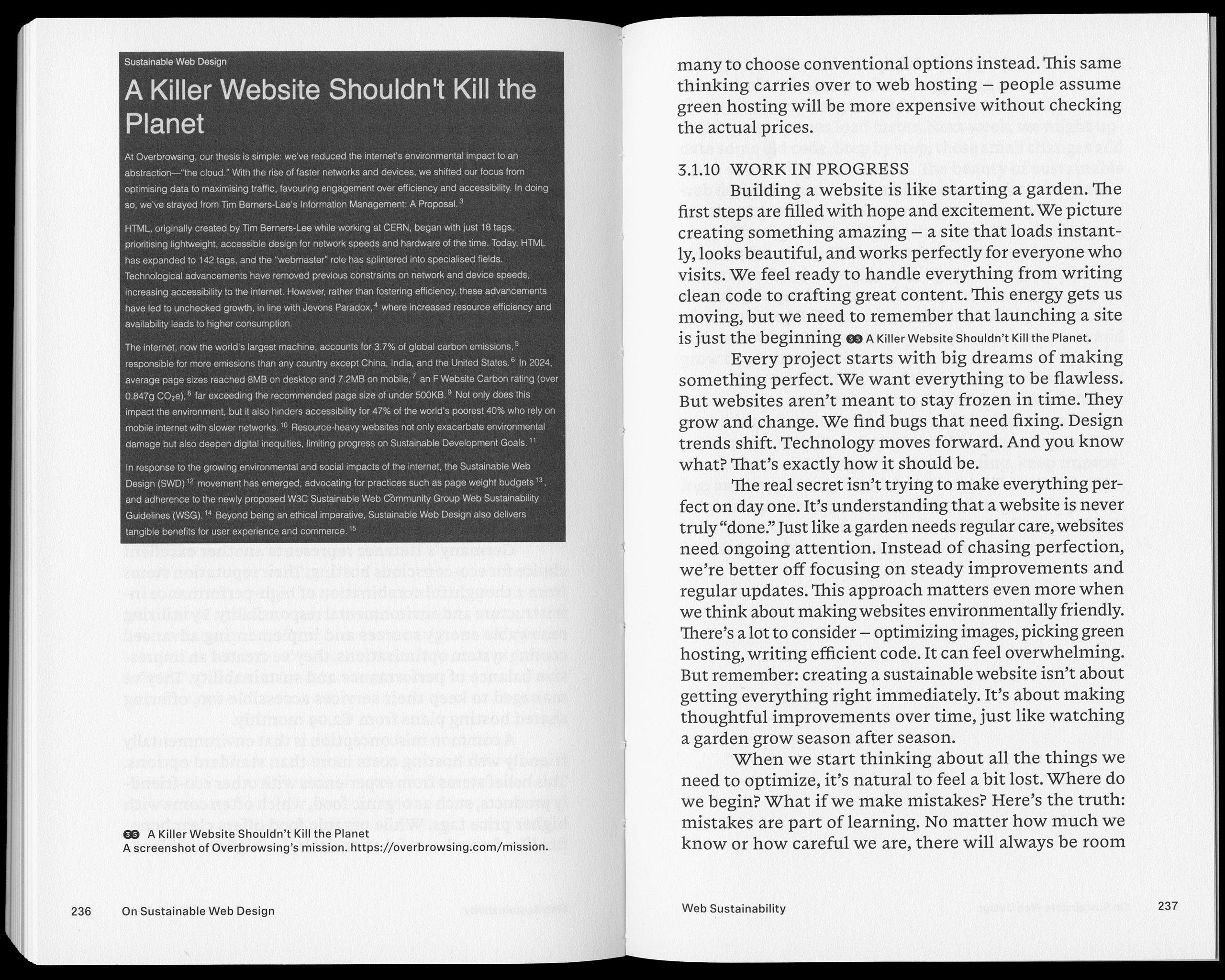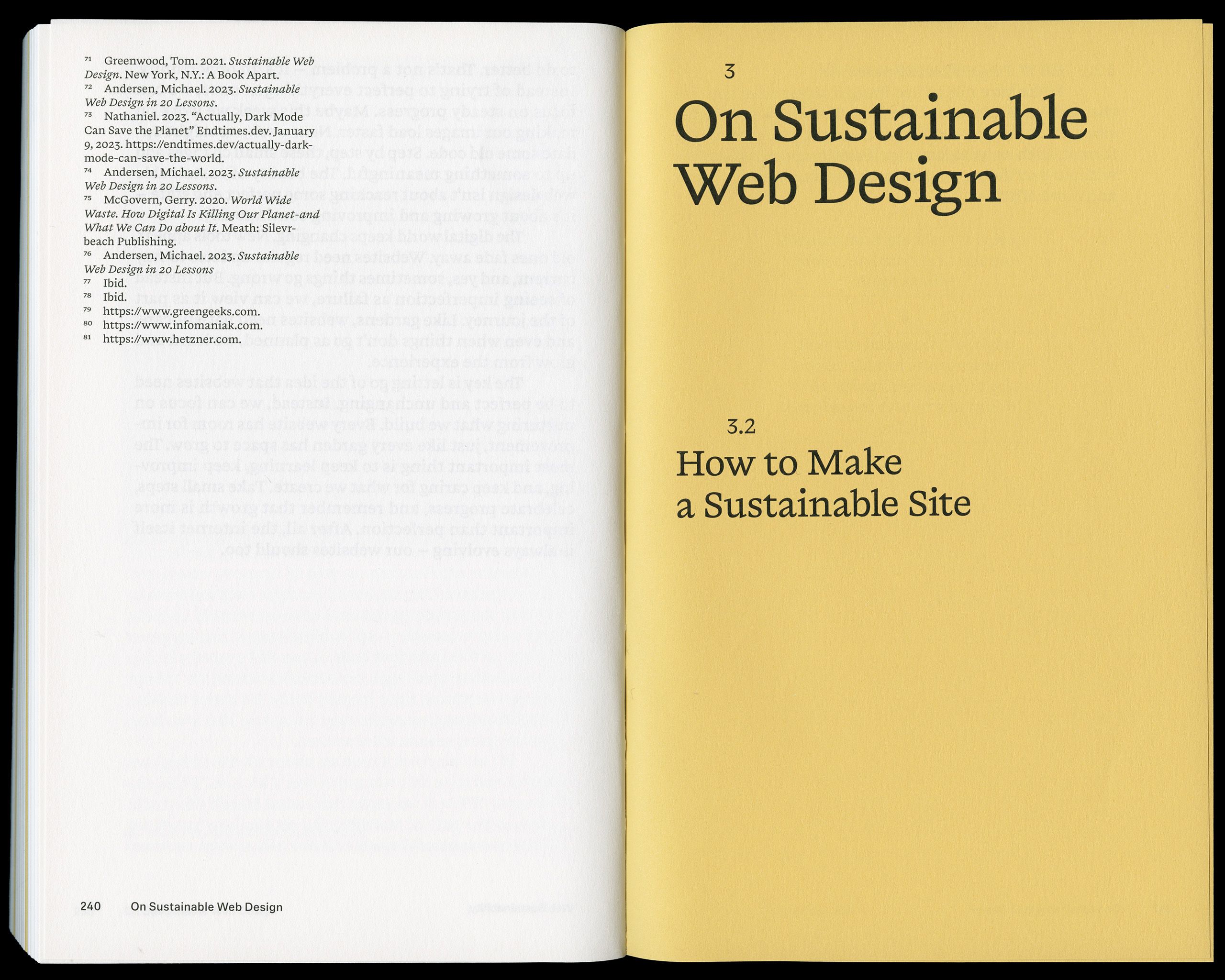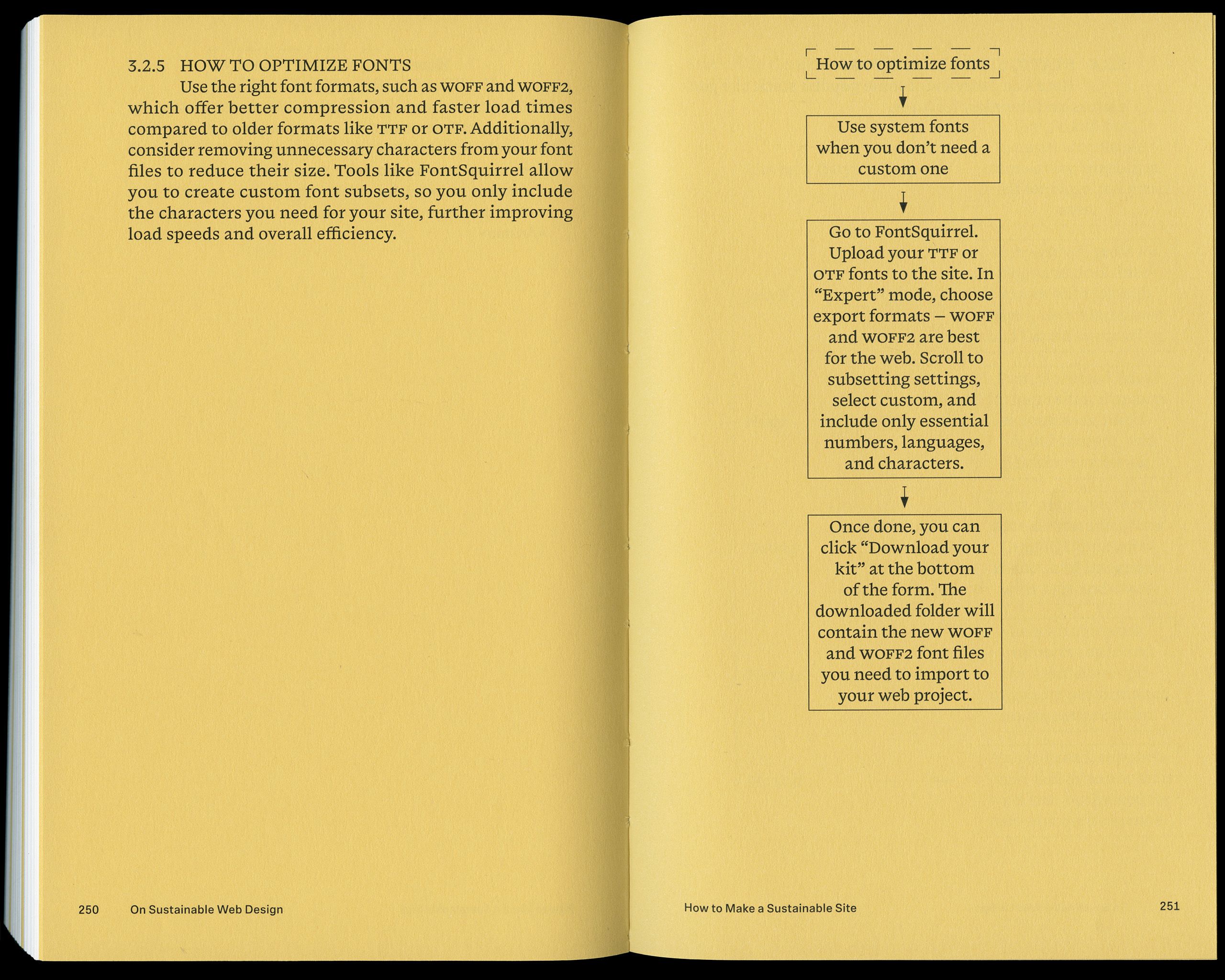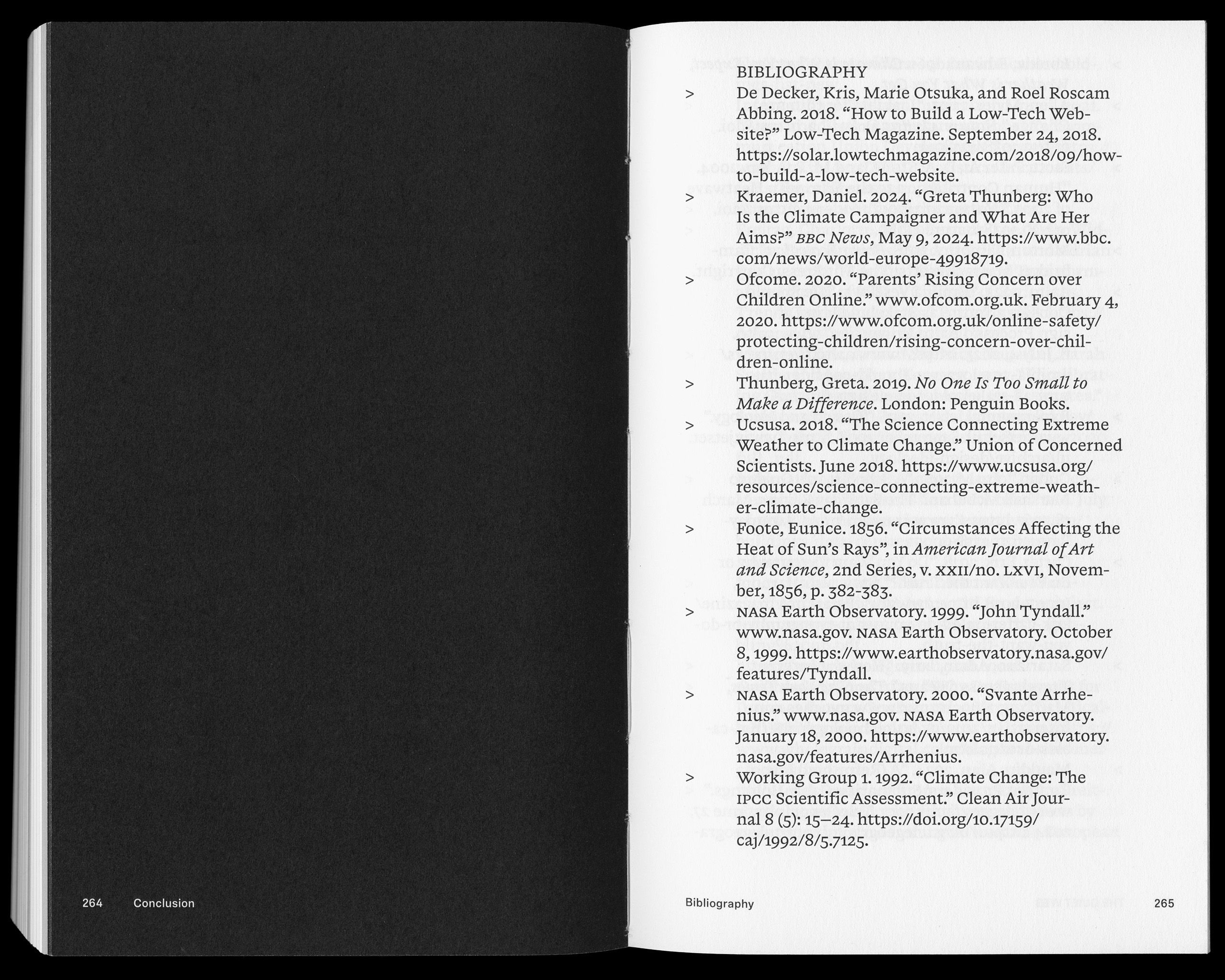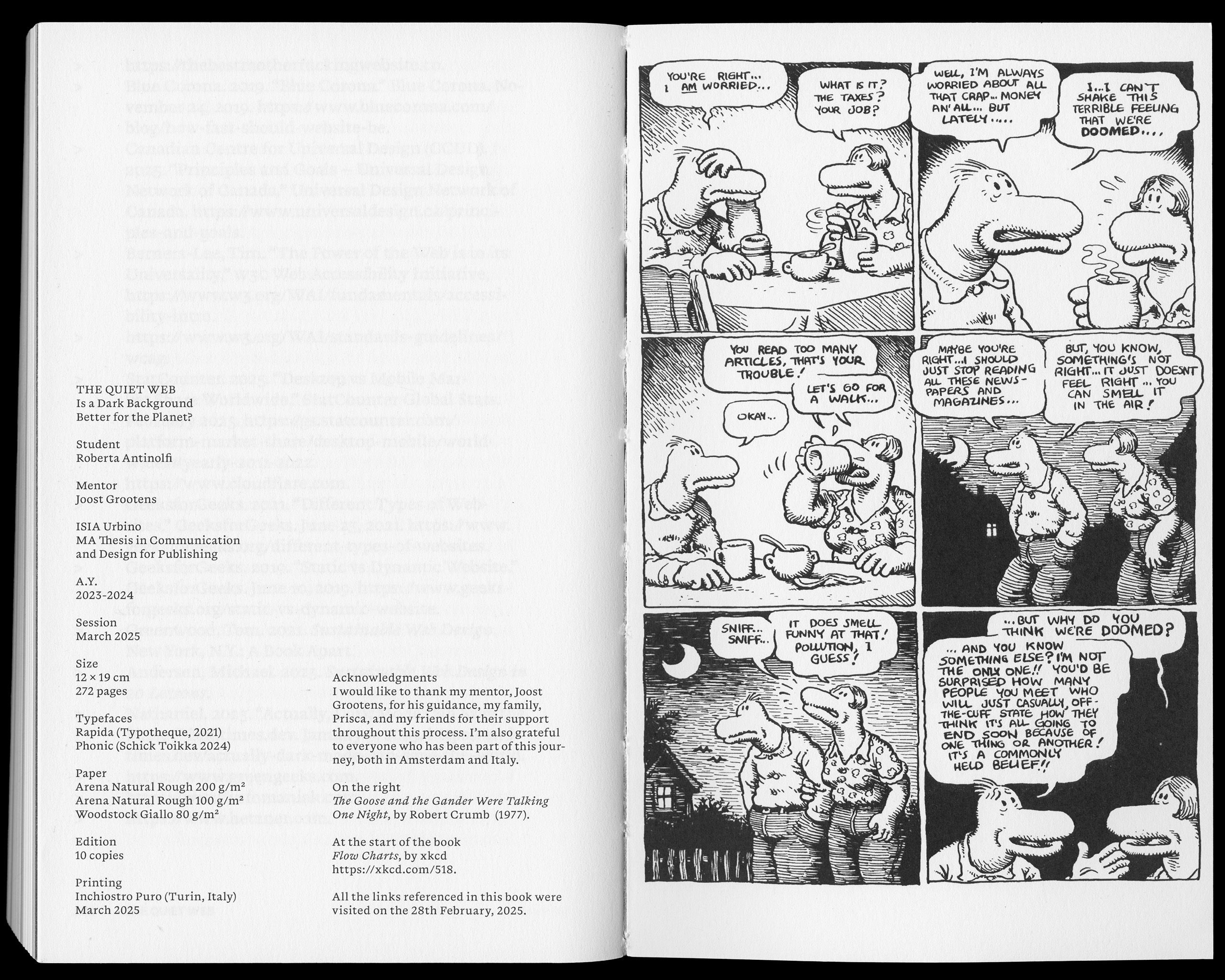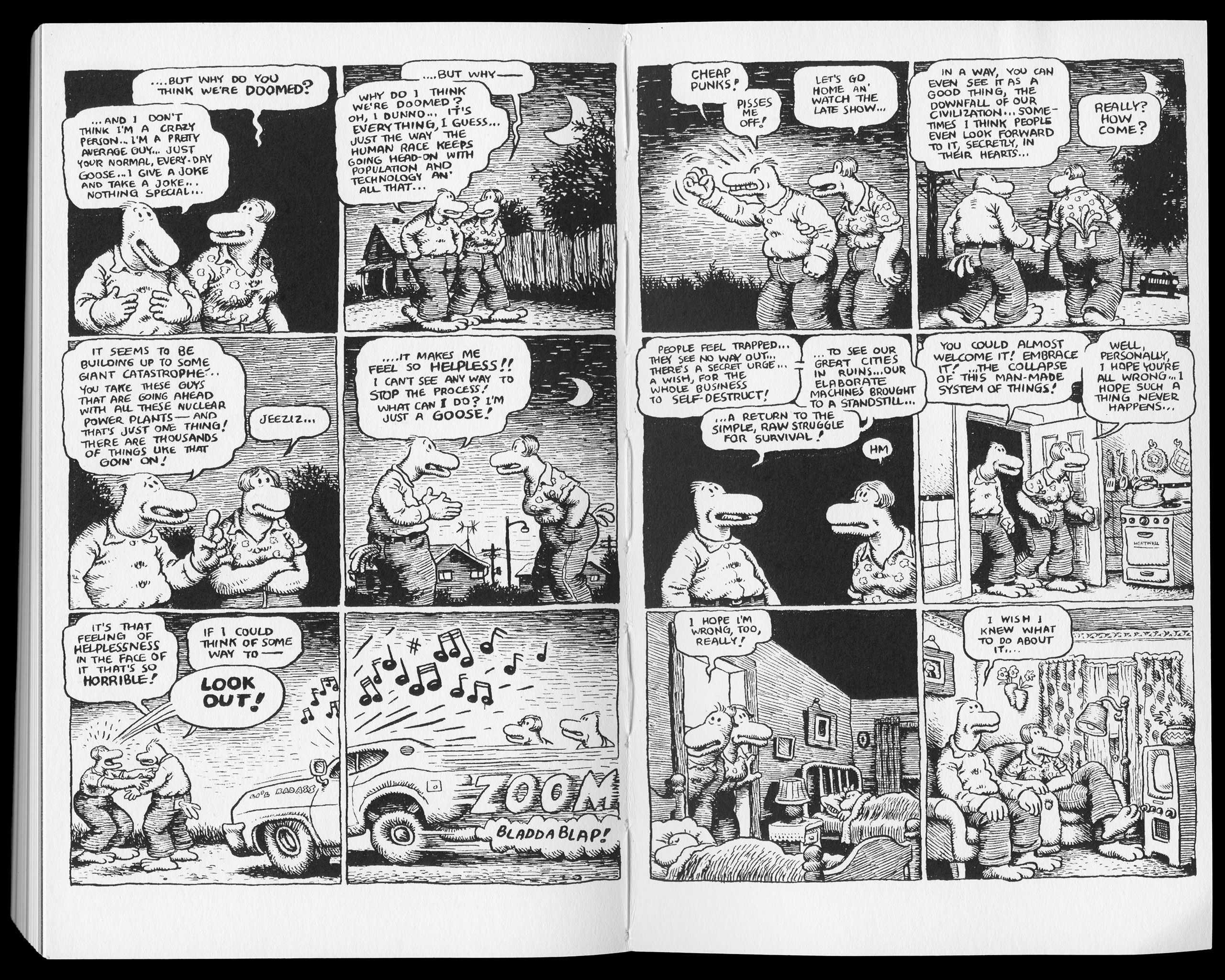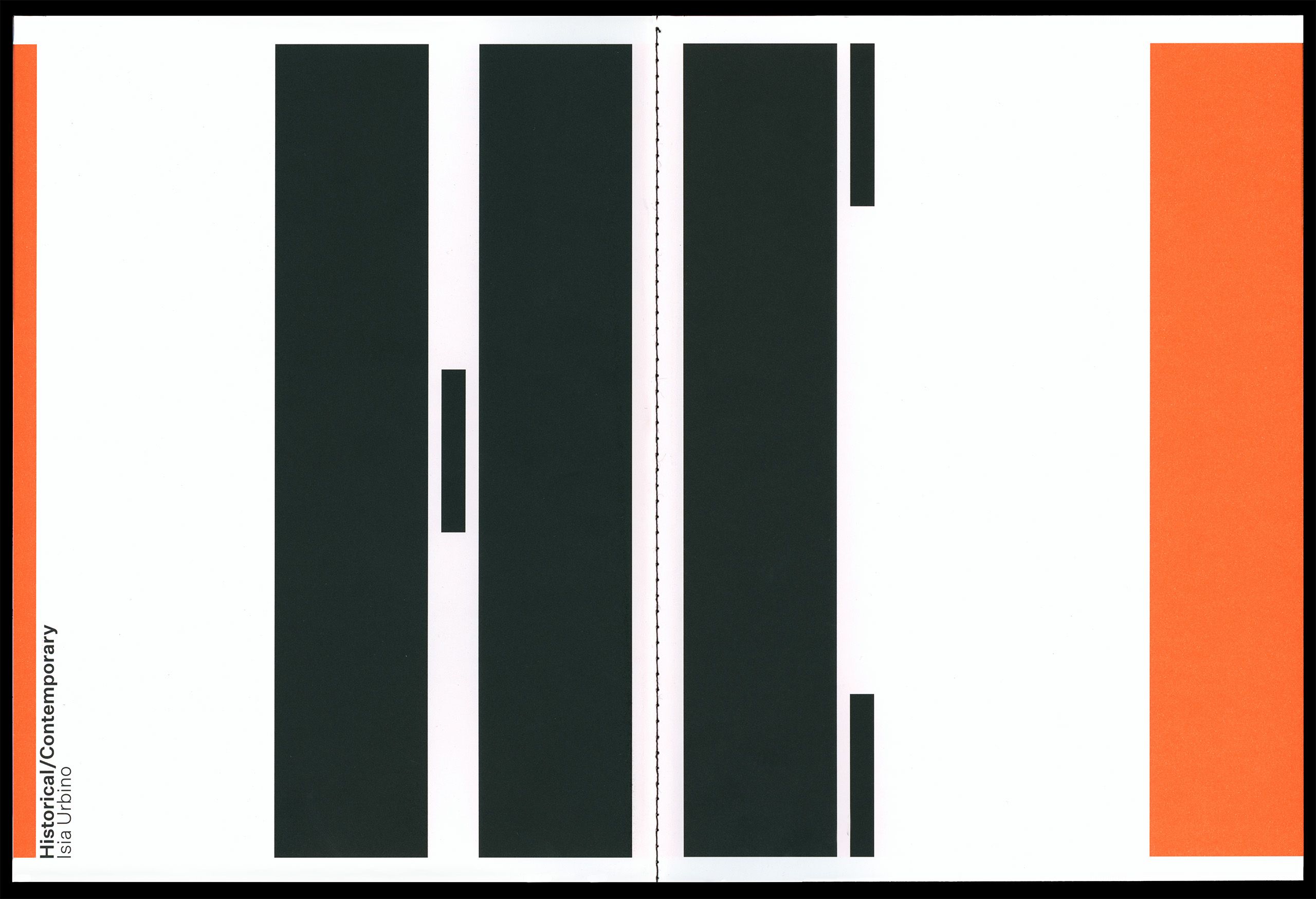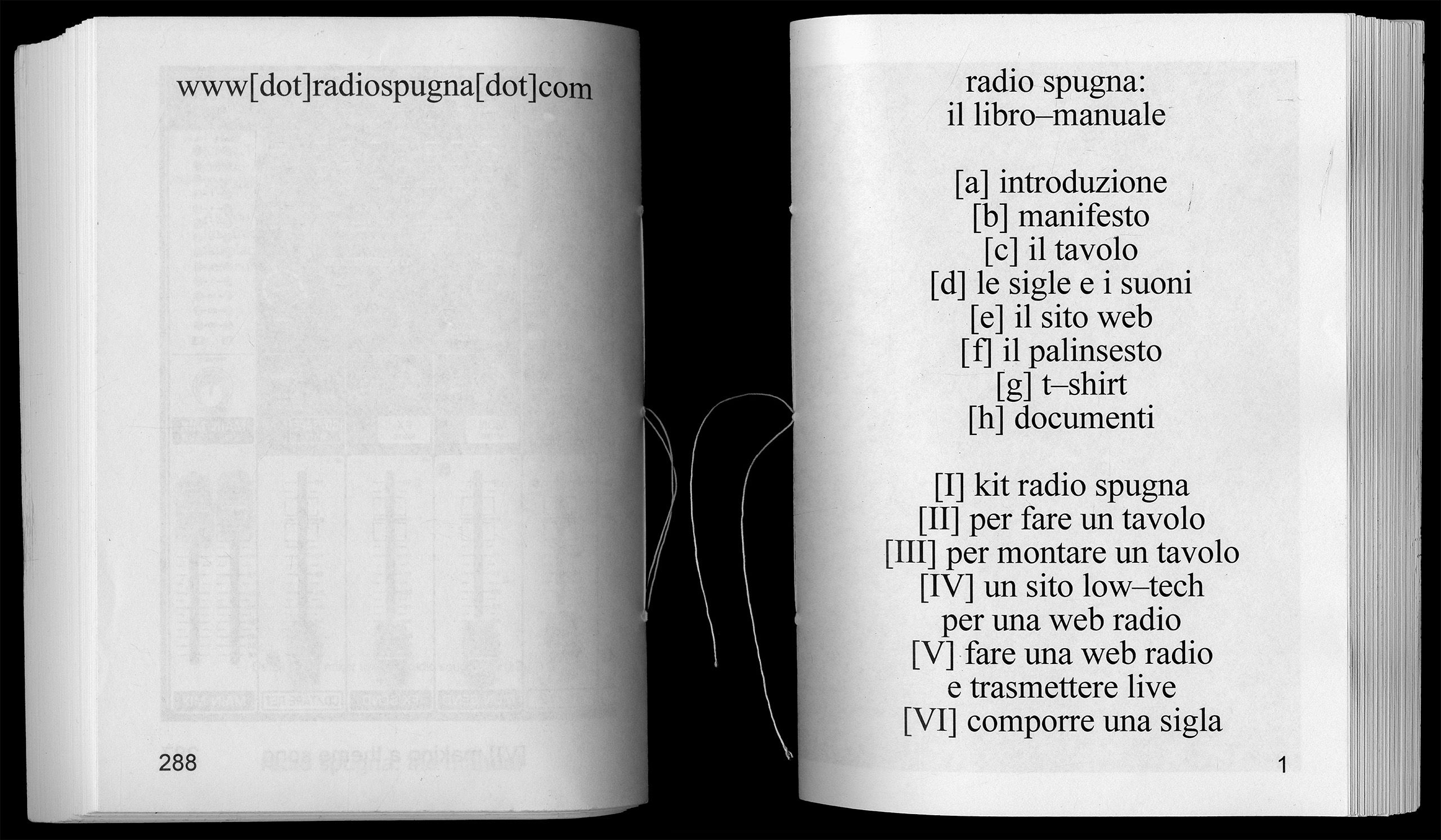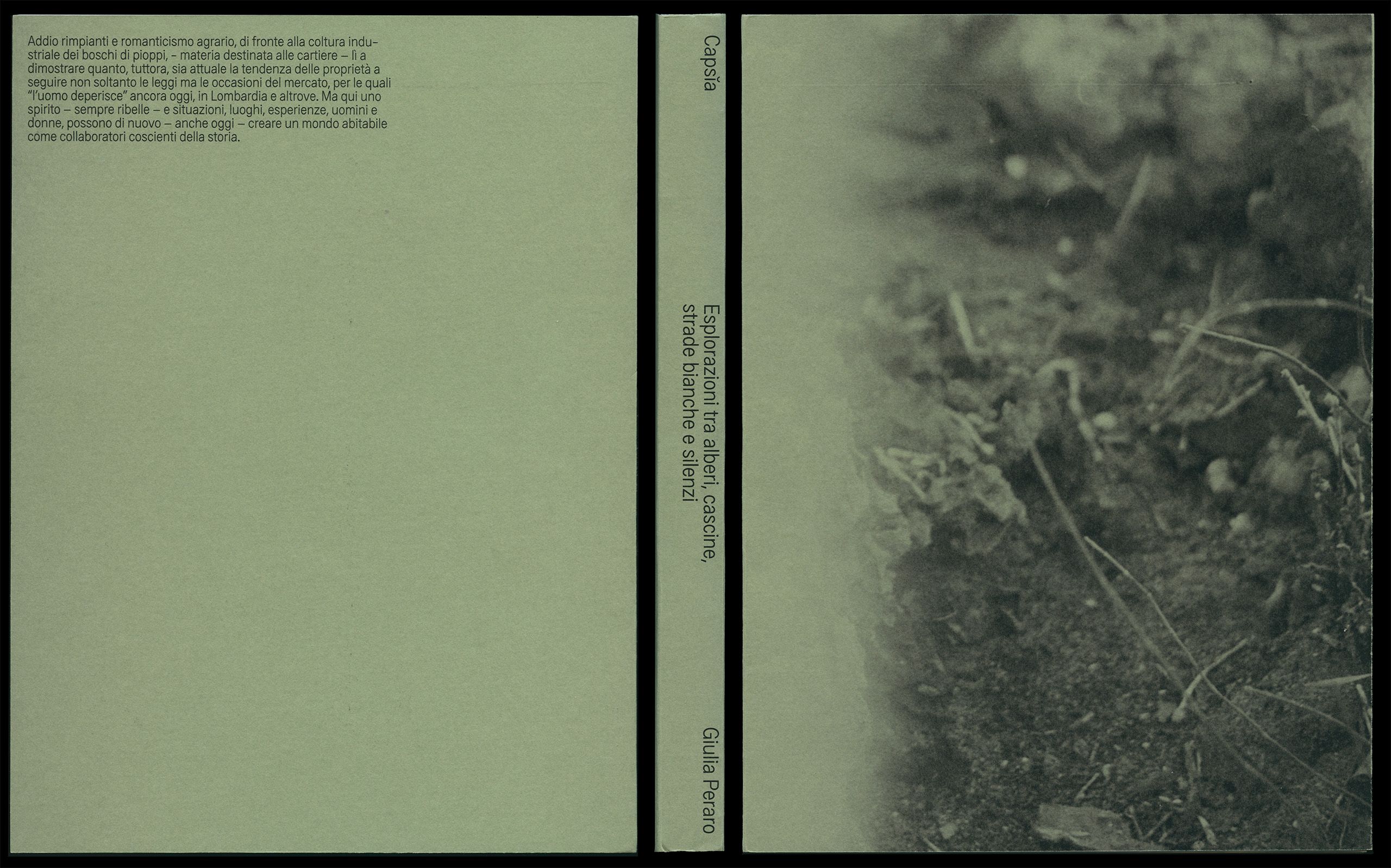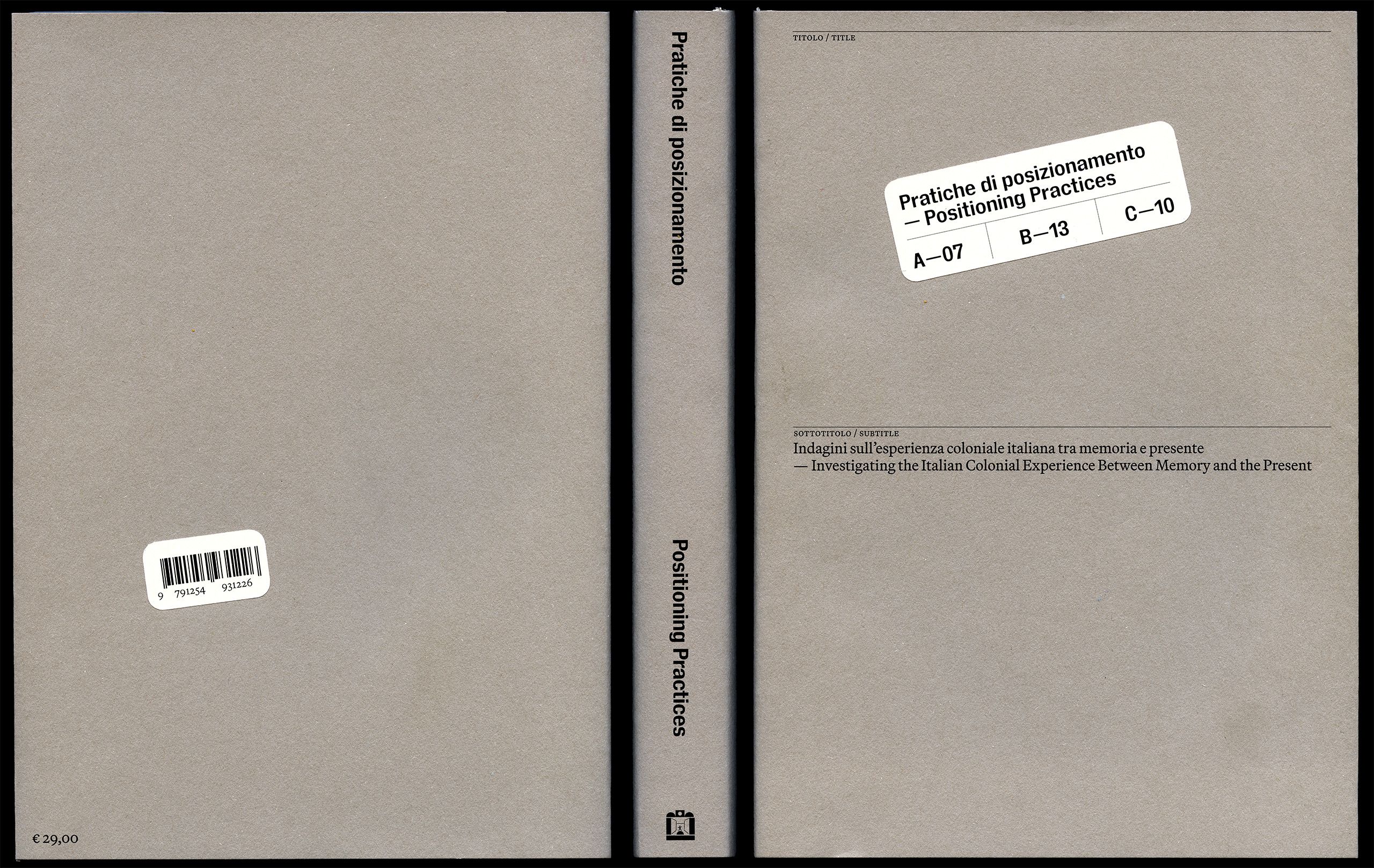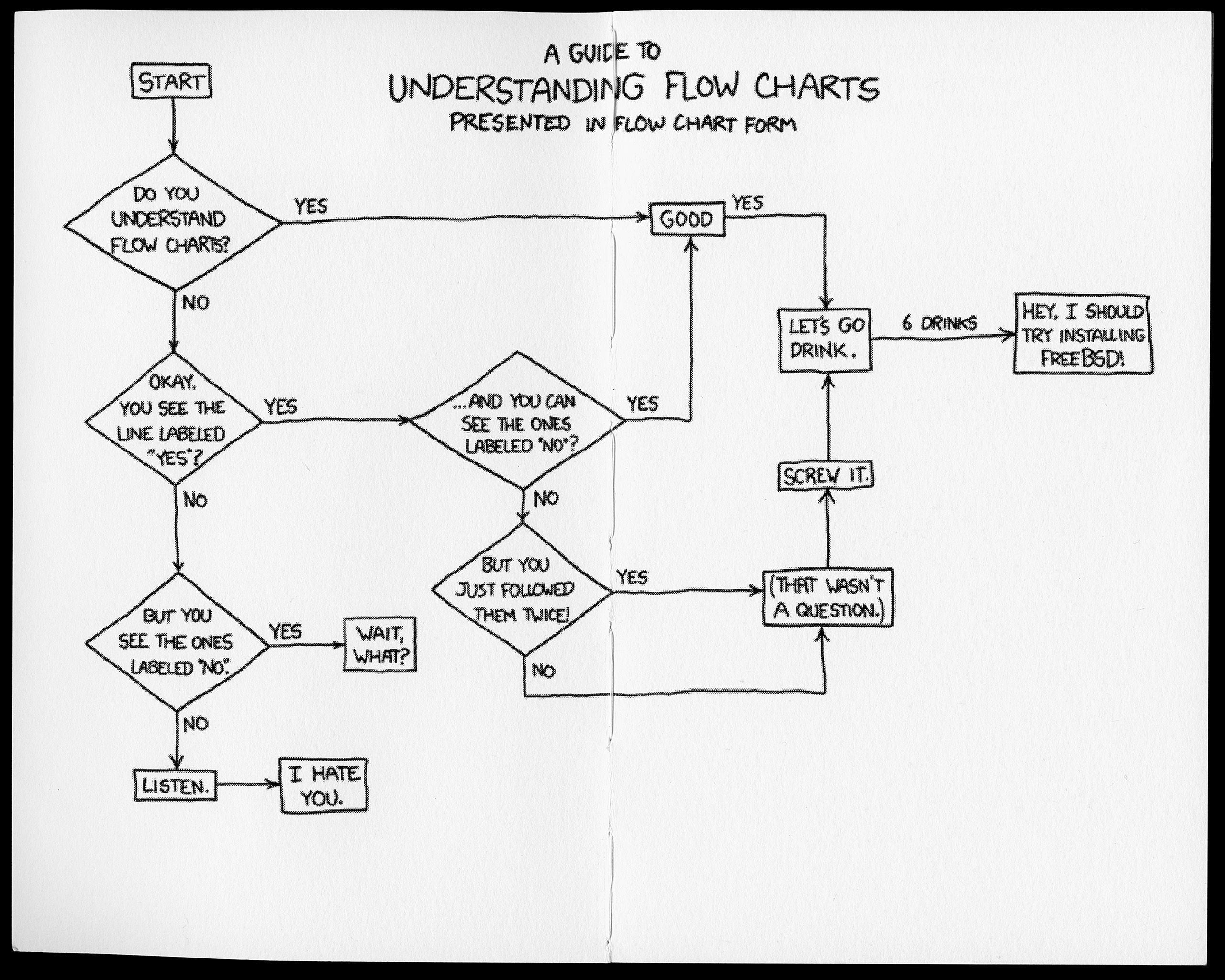
This master thesis is a reflection on my personal journey into programming and how, as a graphic designer, I began to see the Internet from a new perspective, one that considers not only aesthetics and functionality but also environmental impact. For six months, through practical experiments and in-depth research, I have explored the delicate balance between creating modern, engaging websites and reducing their ecological footprint.
The work focuses on three main areas: understanding the environmental impact of the Internet, learning the principles of web design, and applying sustainable development practices to digital projects. Throughout this process, I discovered that sustainable web design does not mean minimizing everything or sacrificing creativity. Instead, it is about making conscious choices, finding the right balance between performance, usability, and environmental responsibility.
More than a collection of technical solutions, this thesis represents a shift in perspective, presenting web development as a continuous commitment to reducing environmental impact. It is intended for designers and creative professionals who, like me, see coding as an additional skill, but also for anyone interested in contributing to a more sustainable digital world. Sustainability, in this context, is not a limitation but an opportunity to create smarter and more mindful digital experiences.
